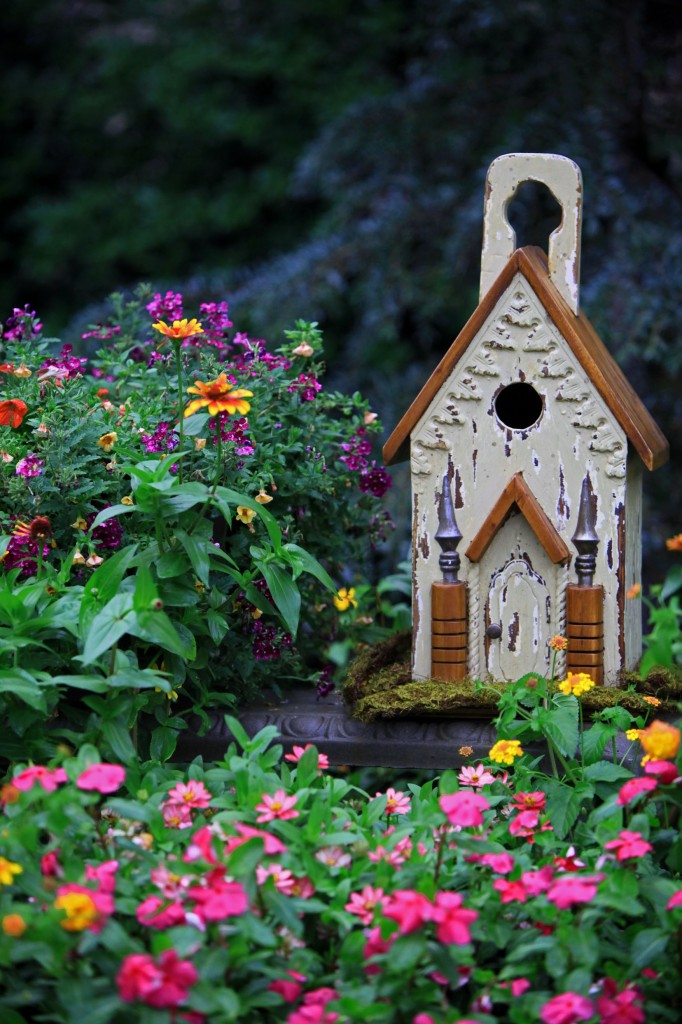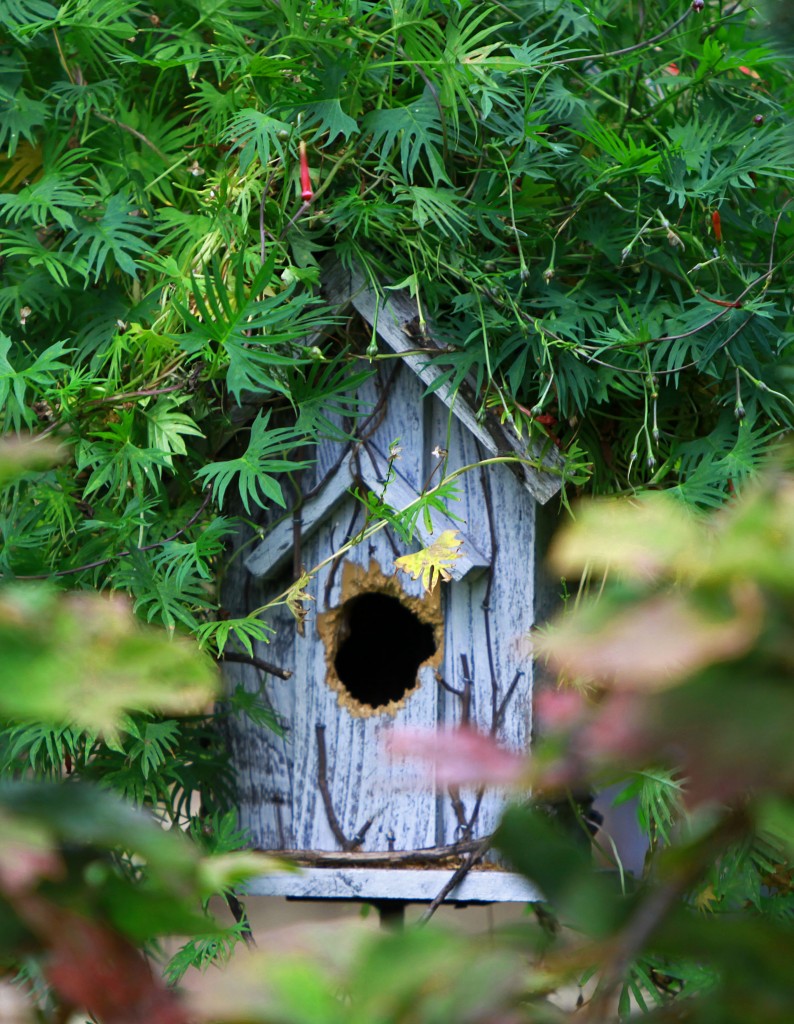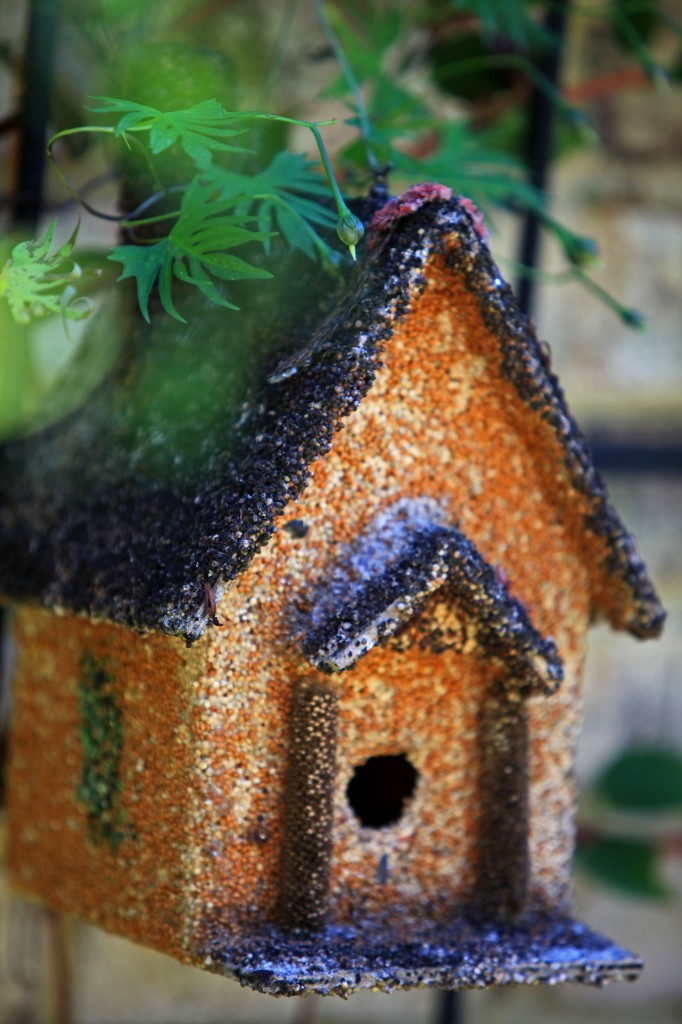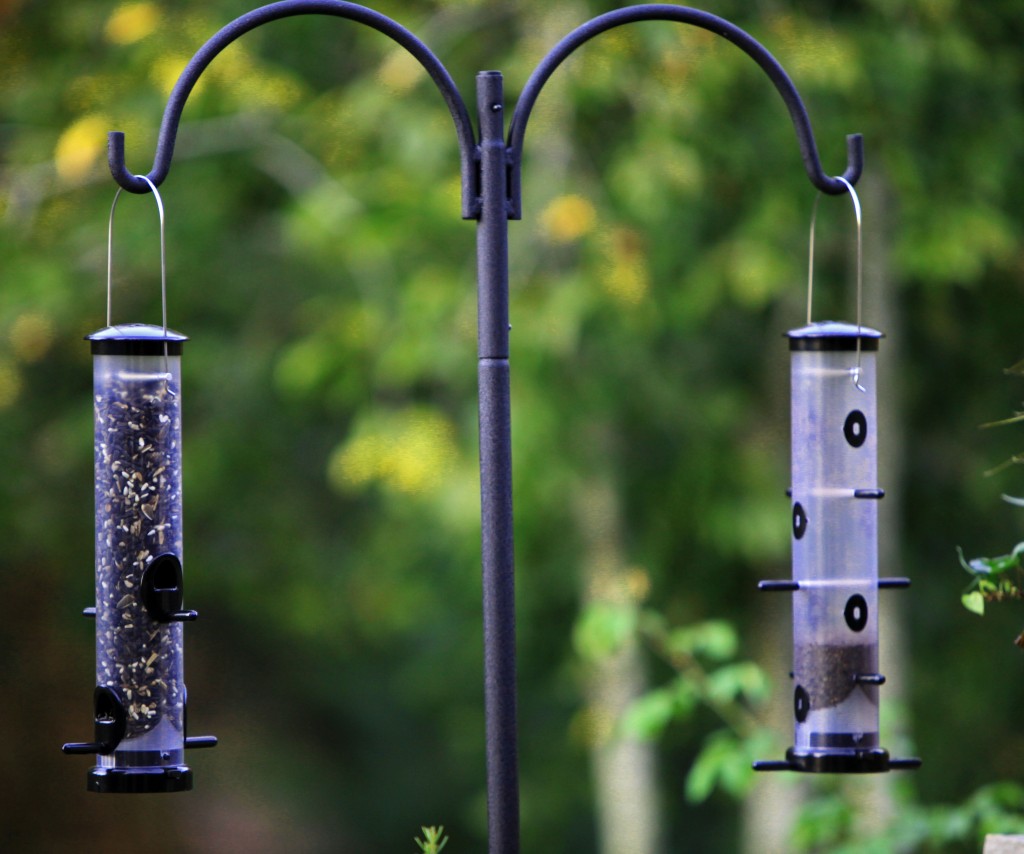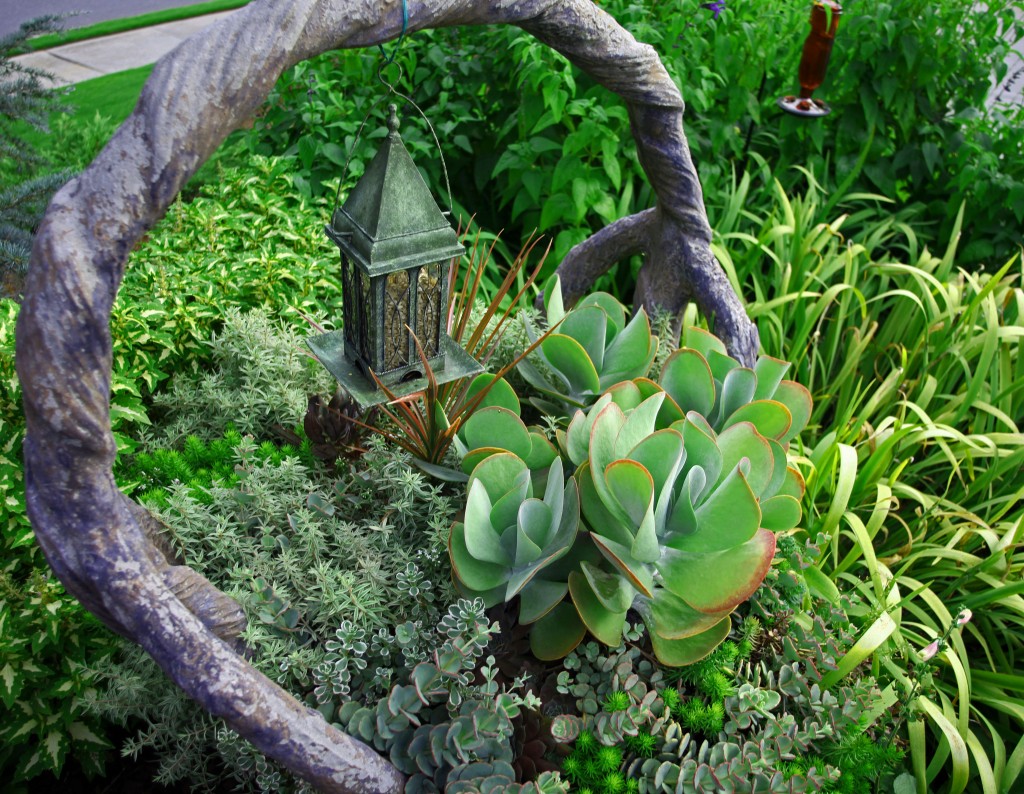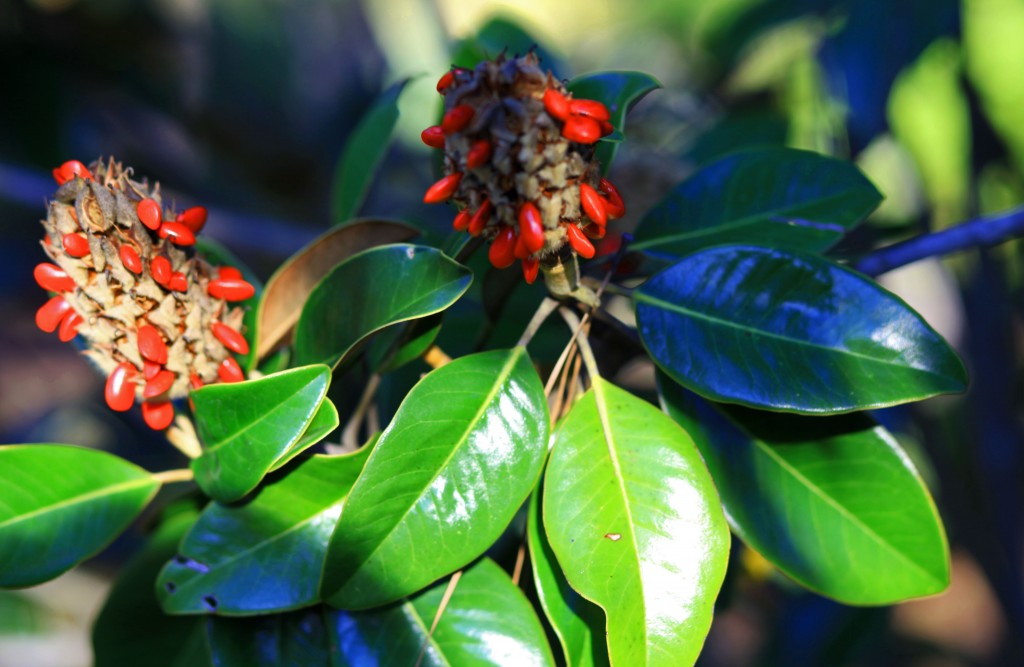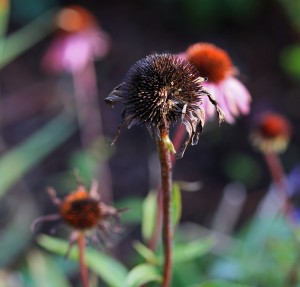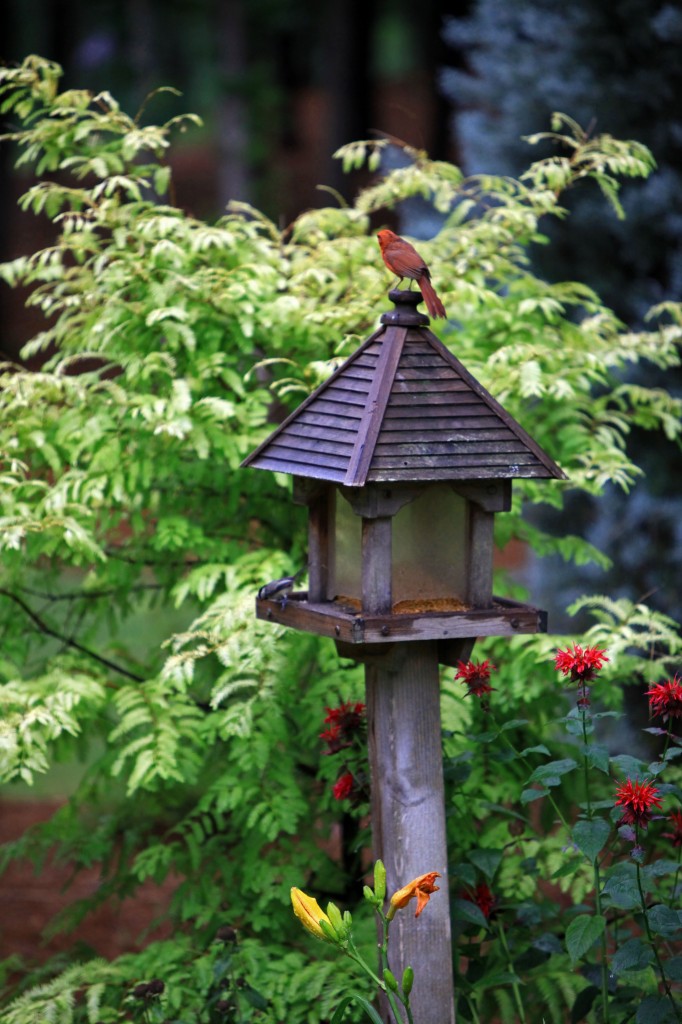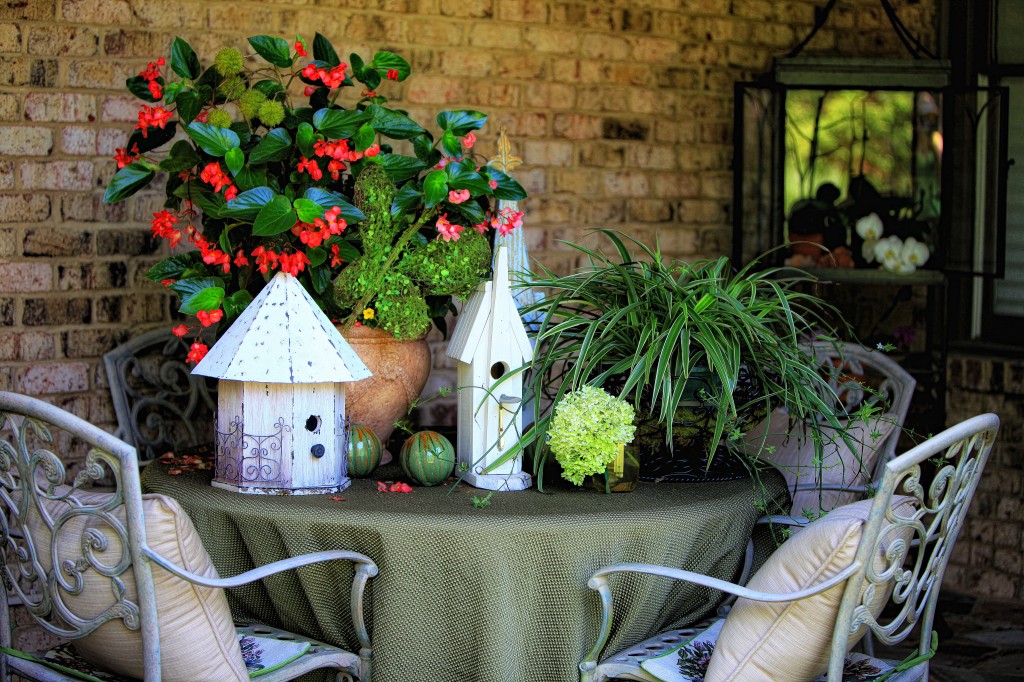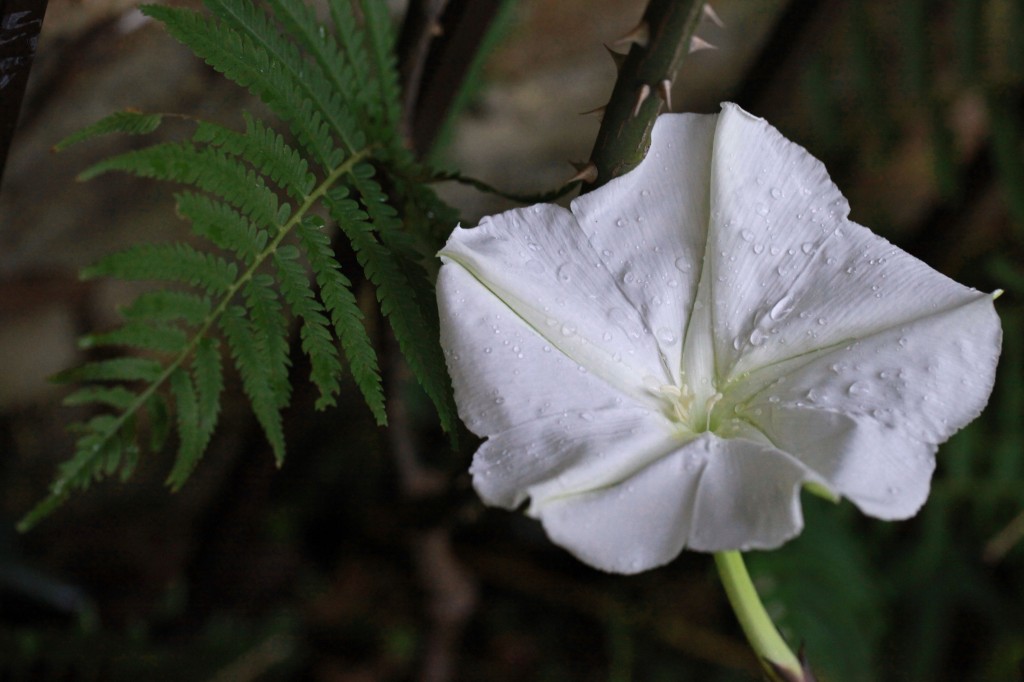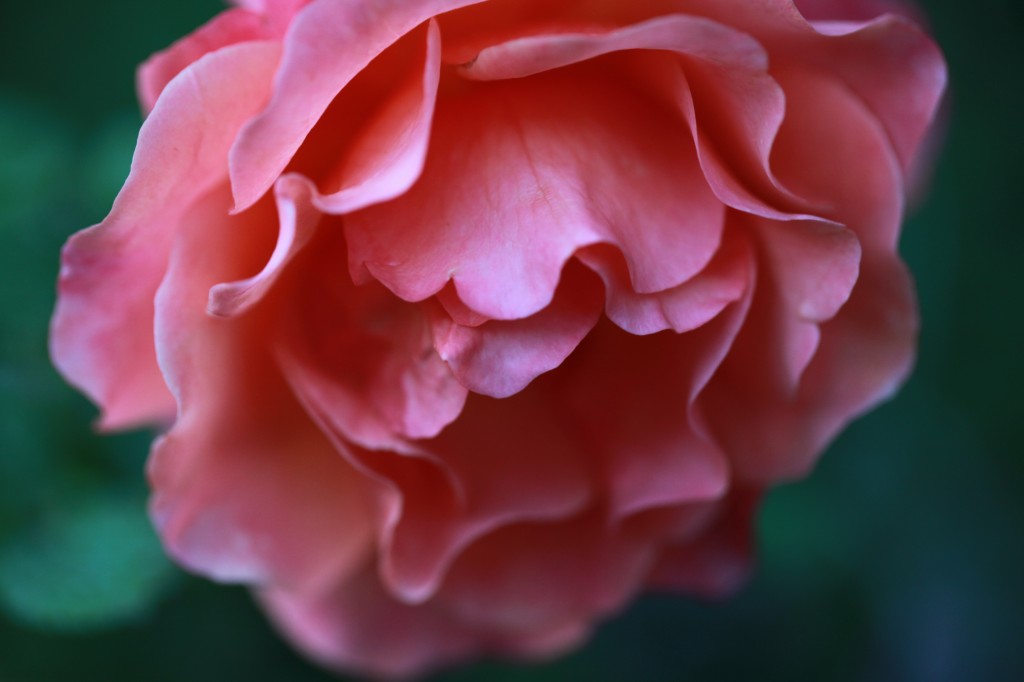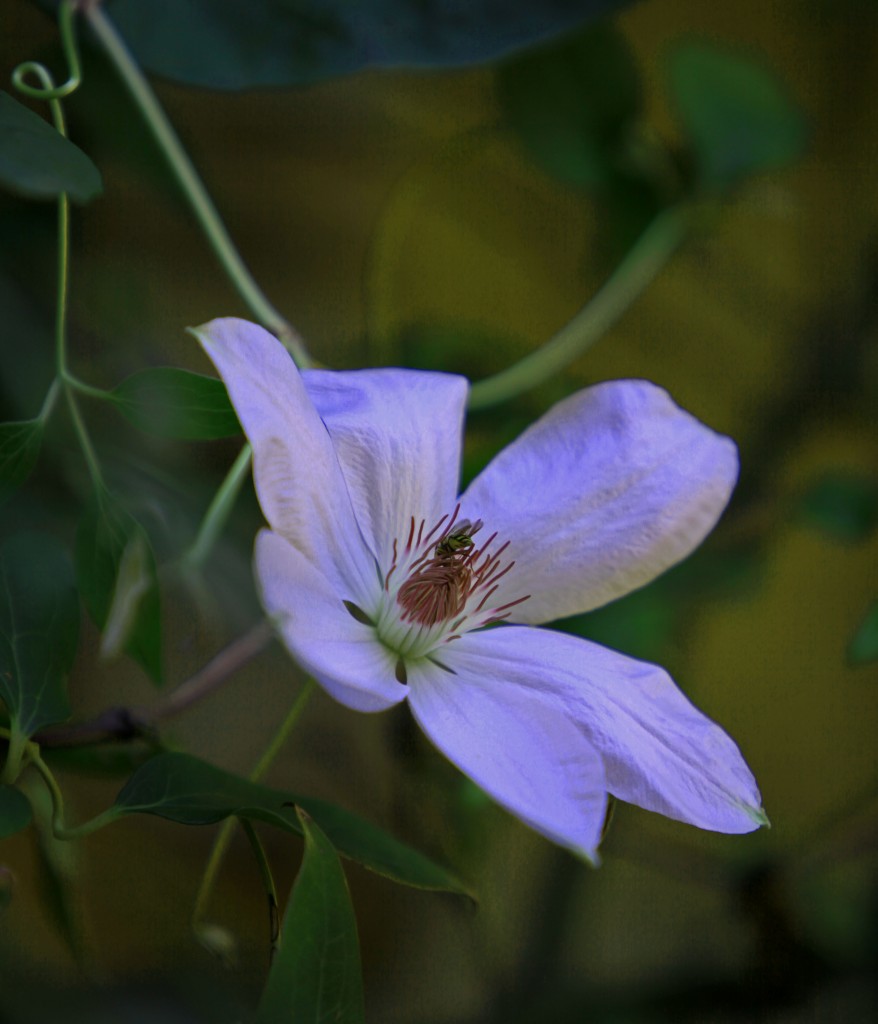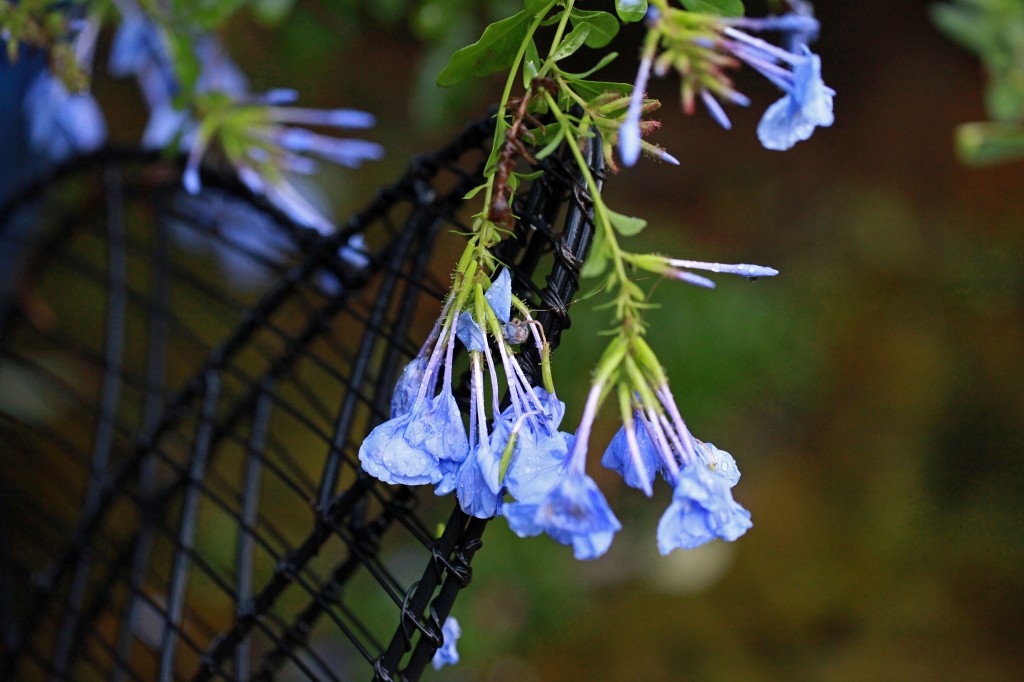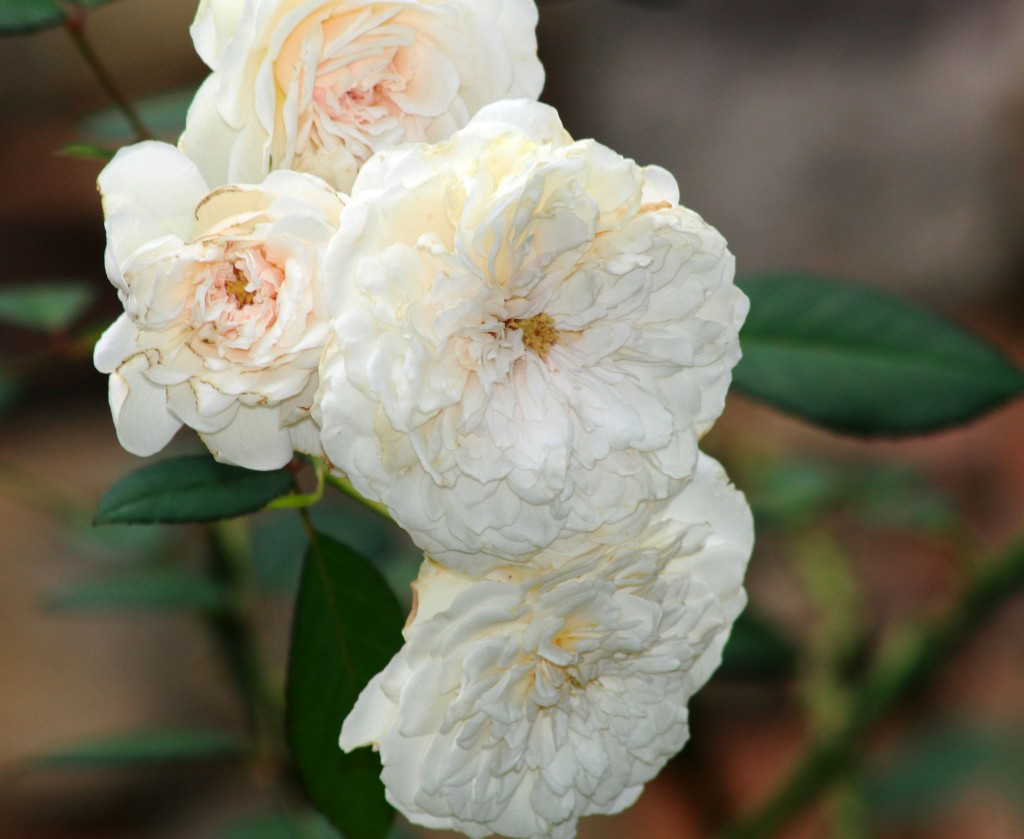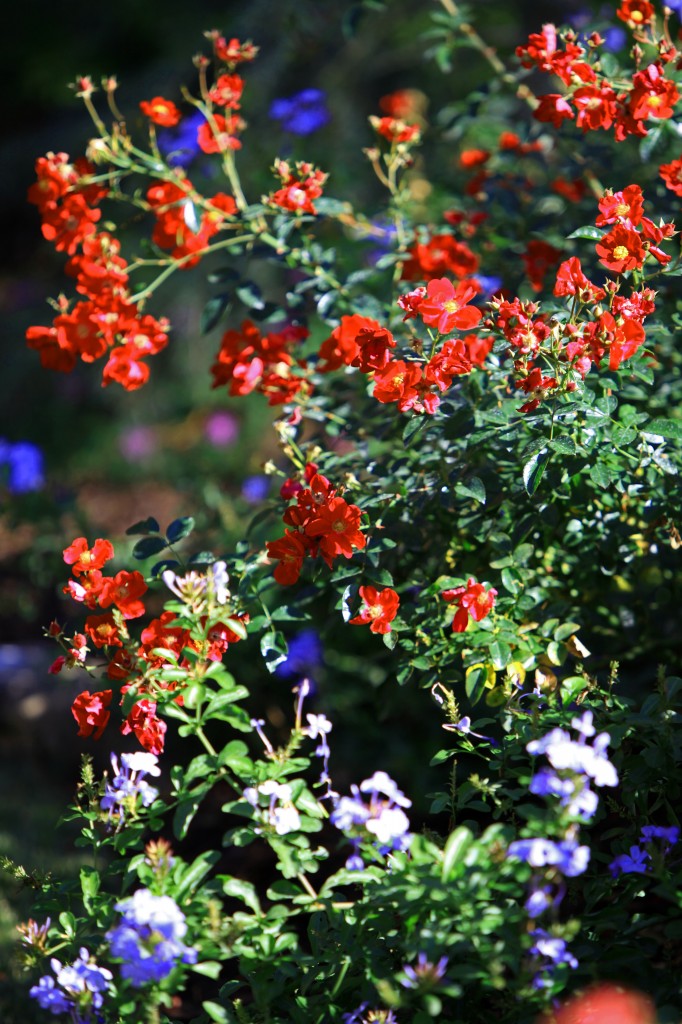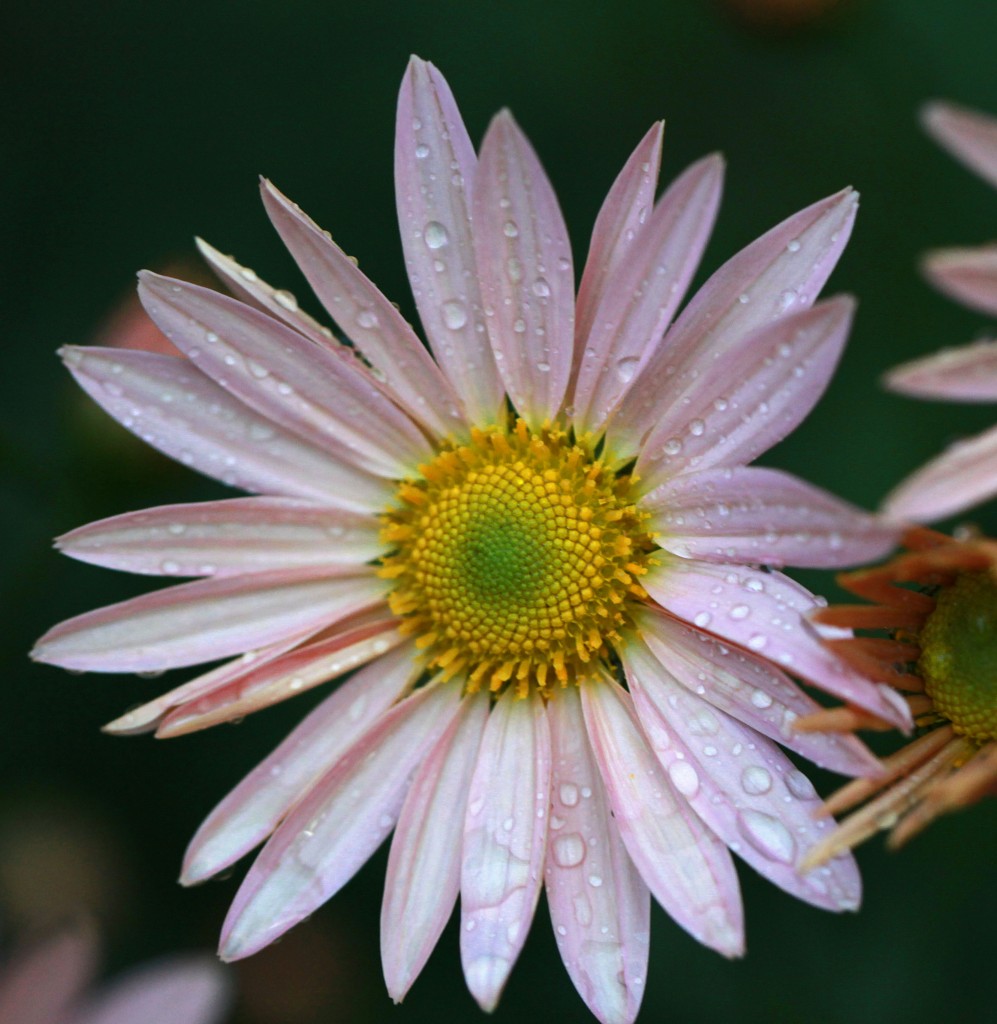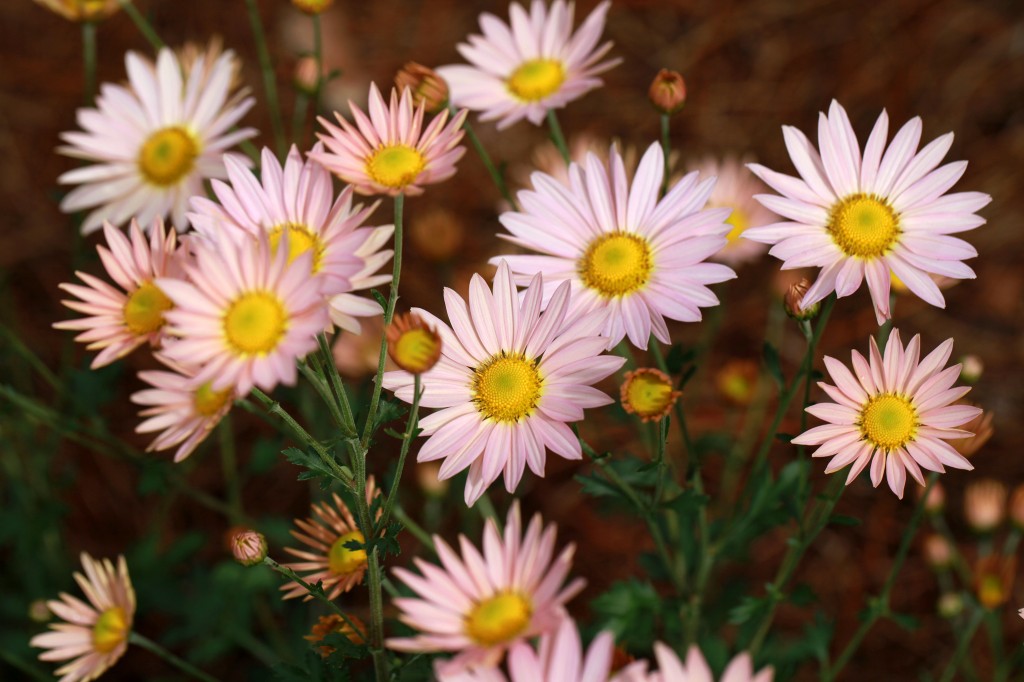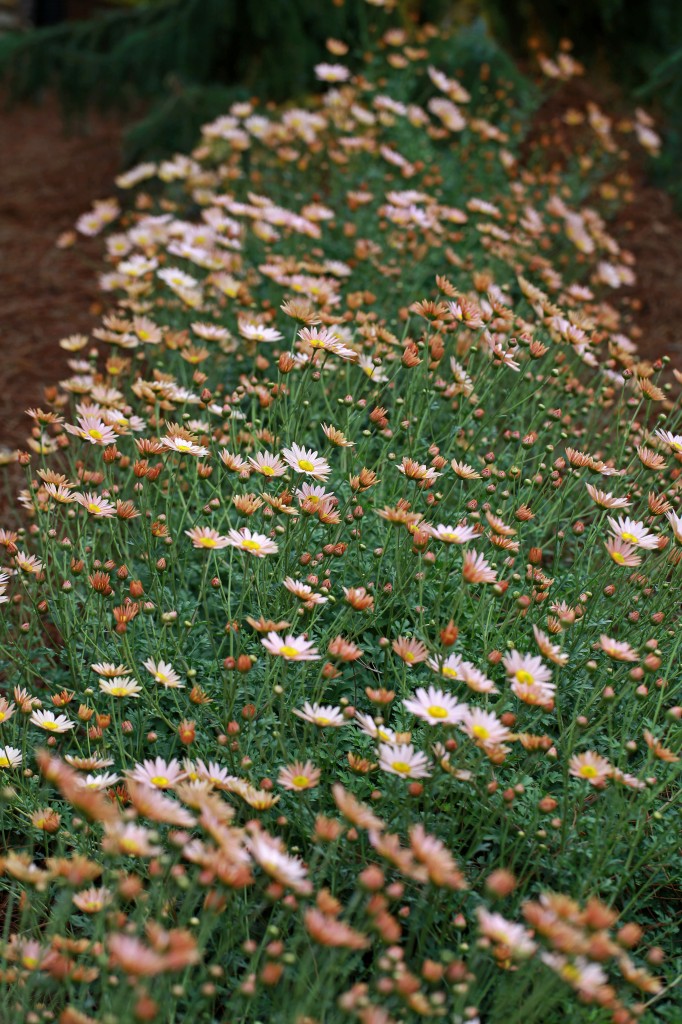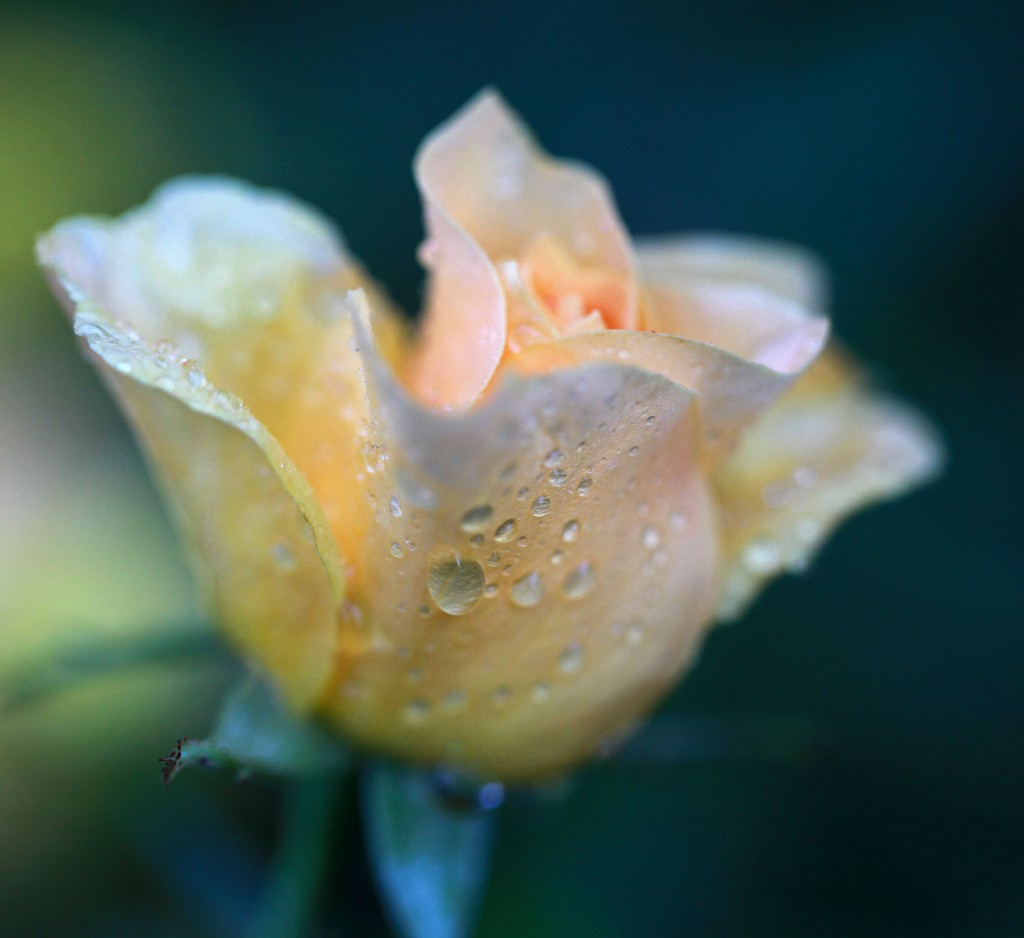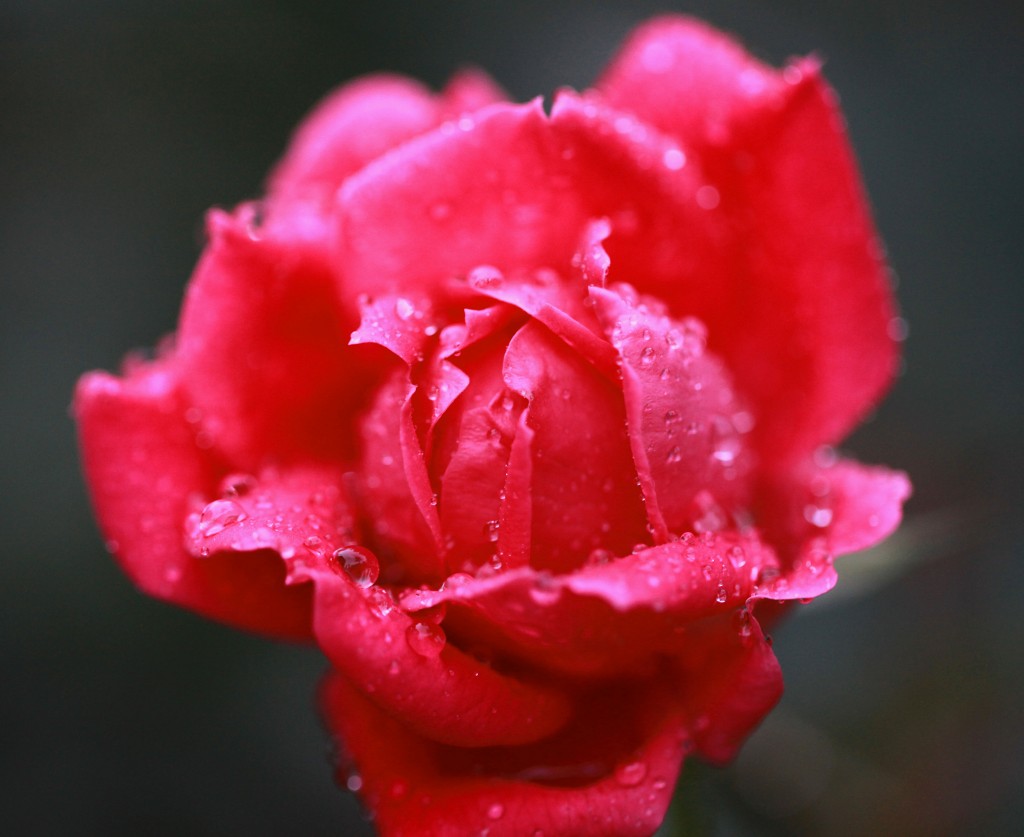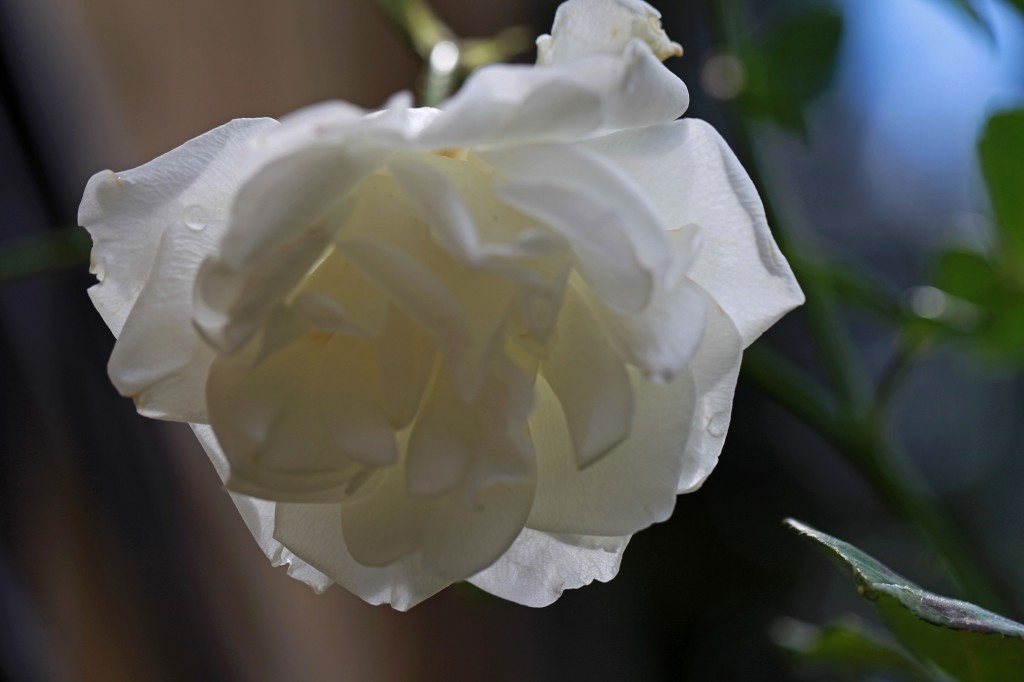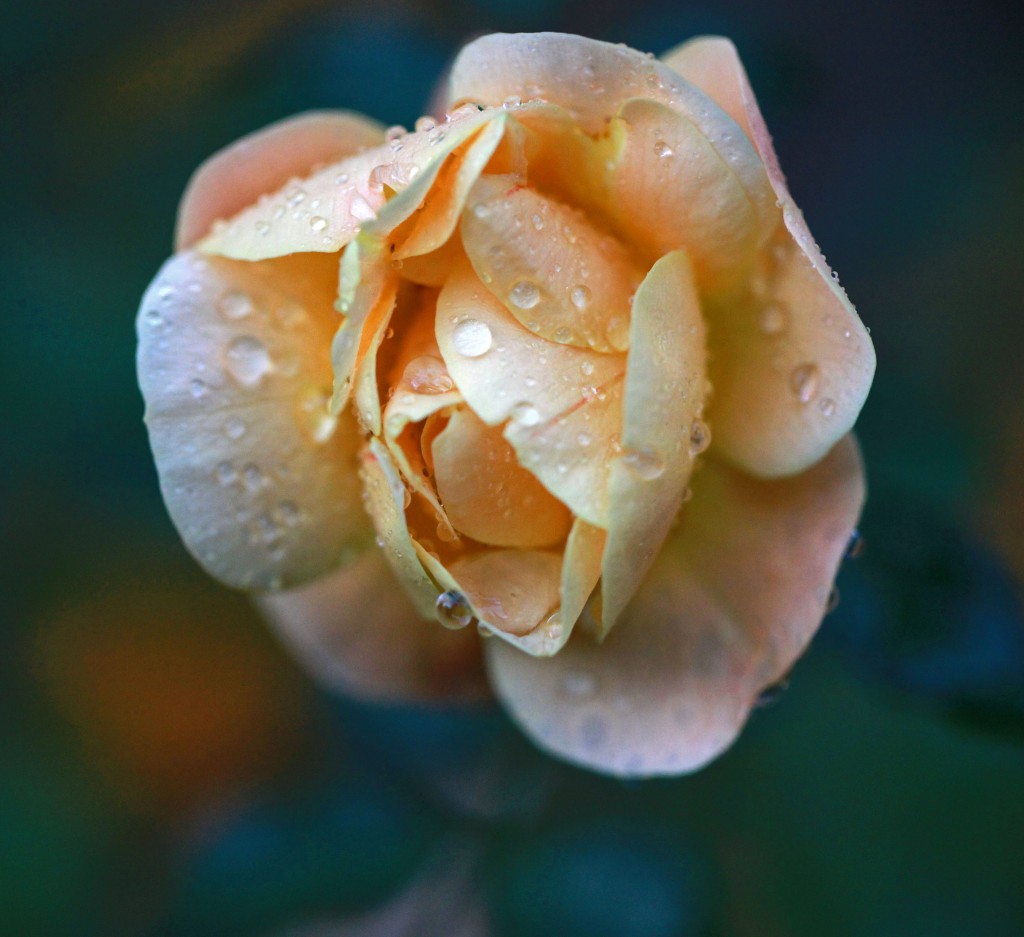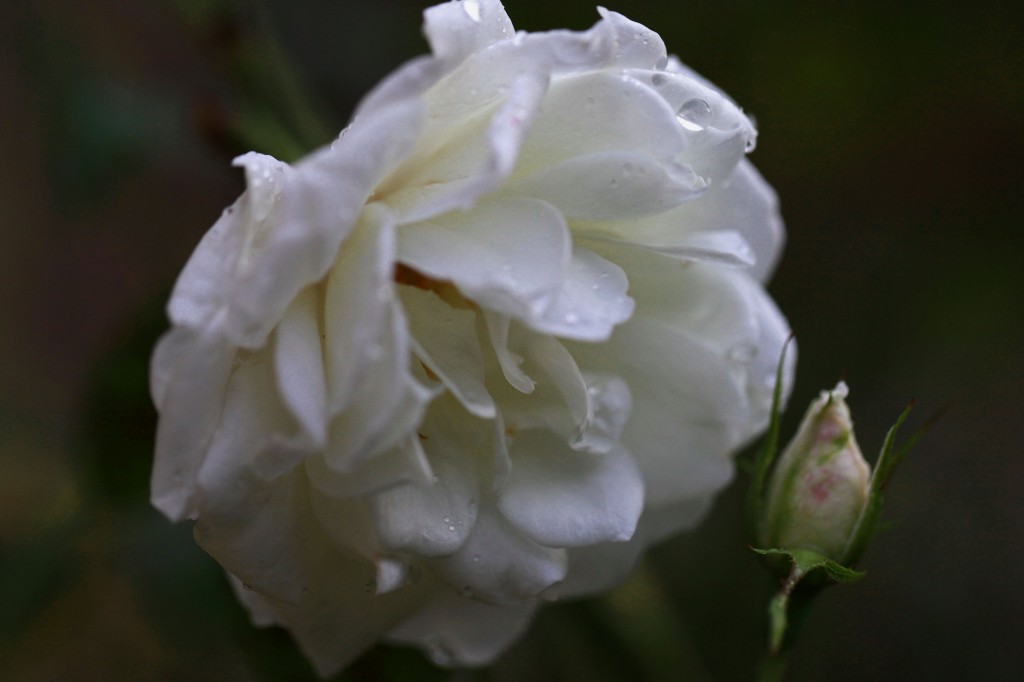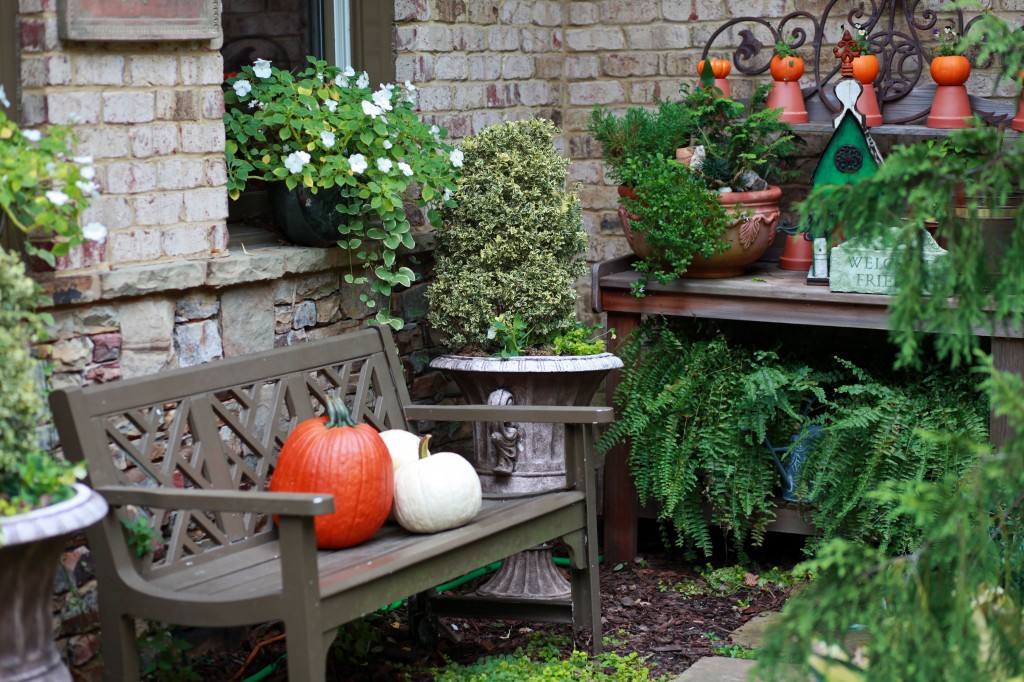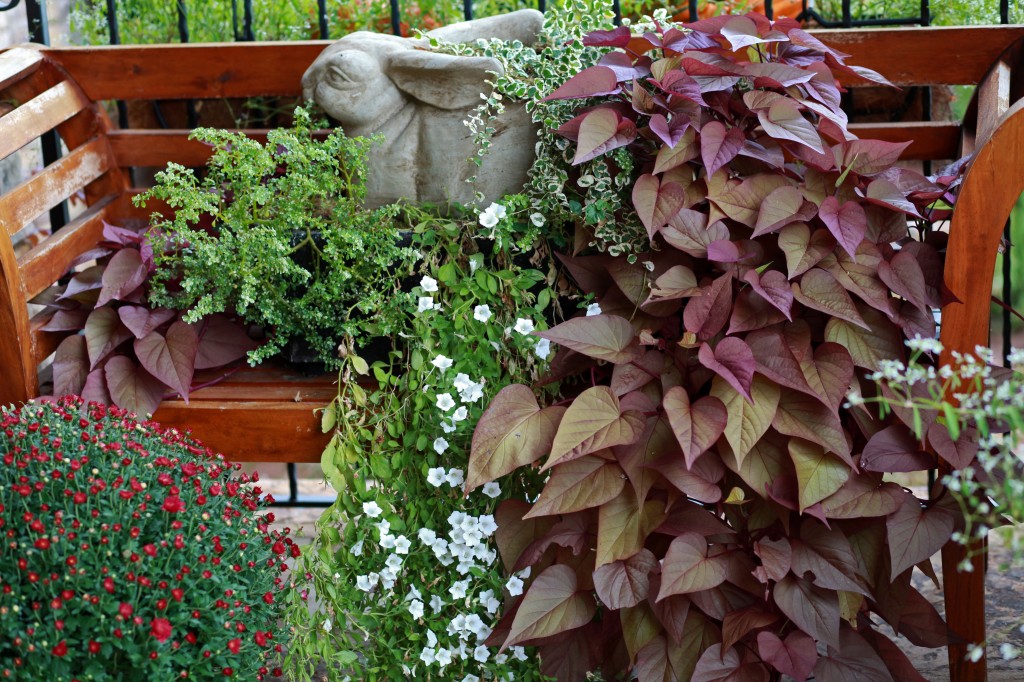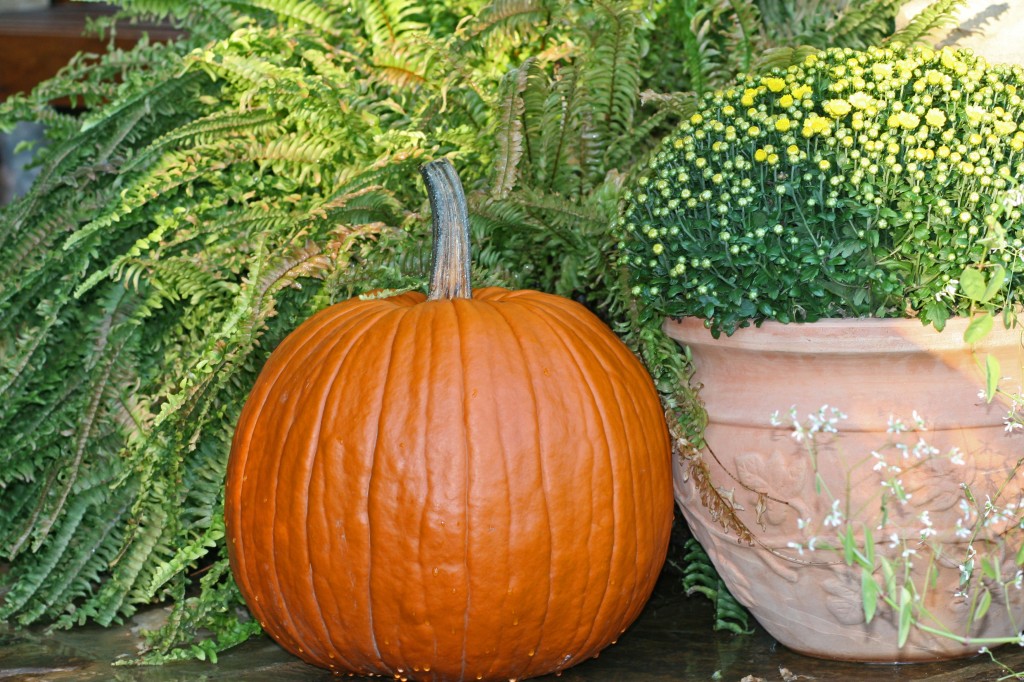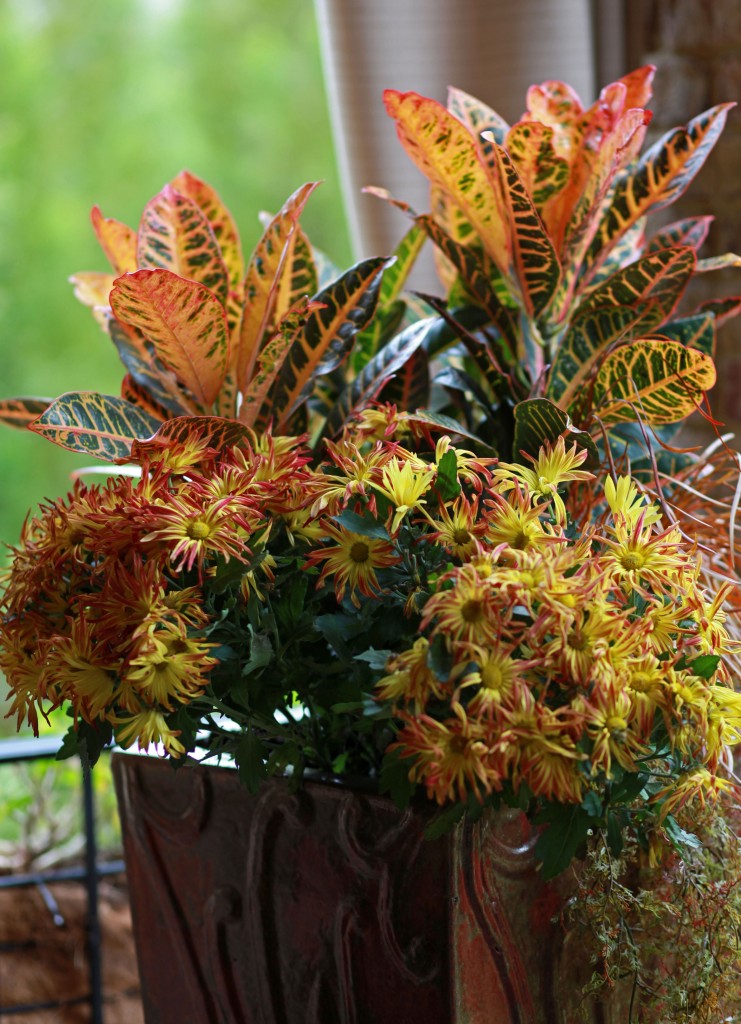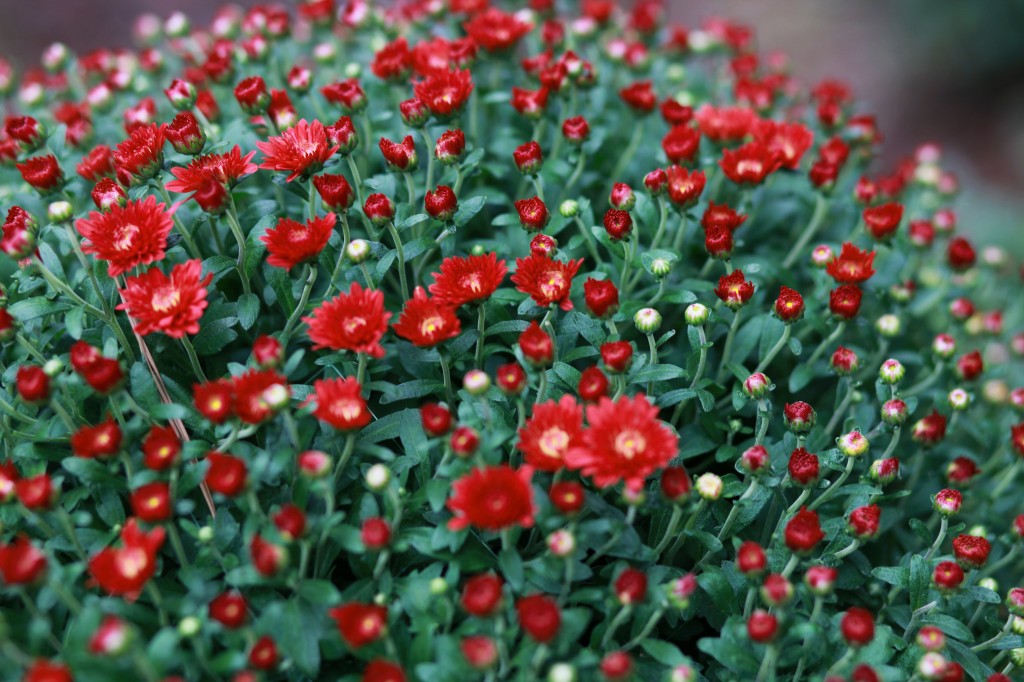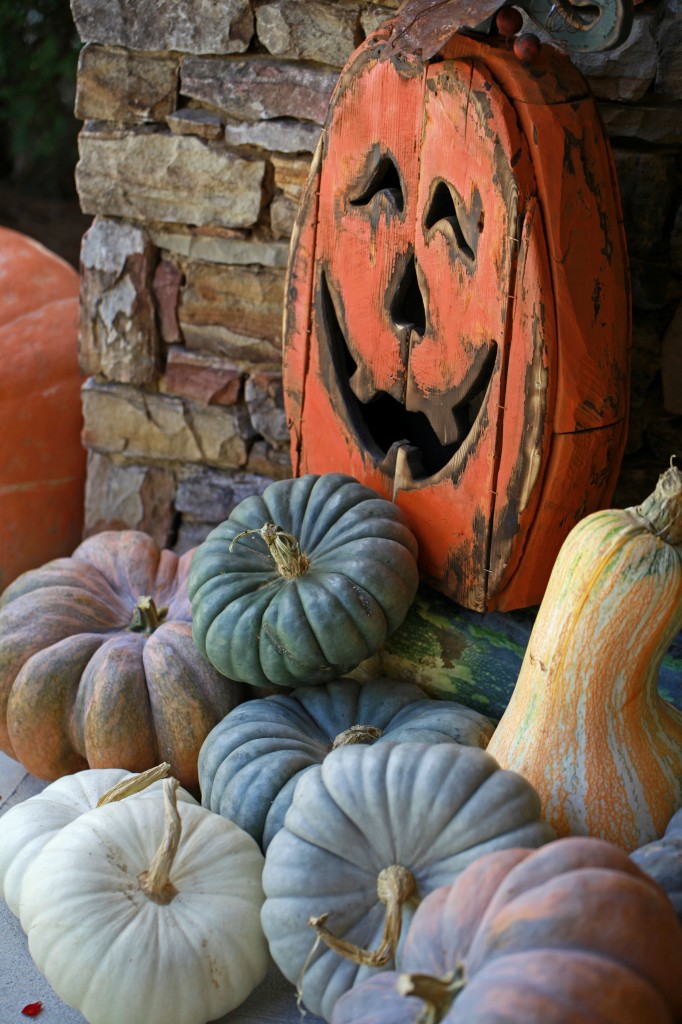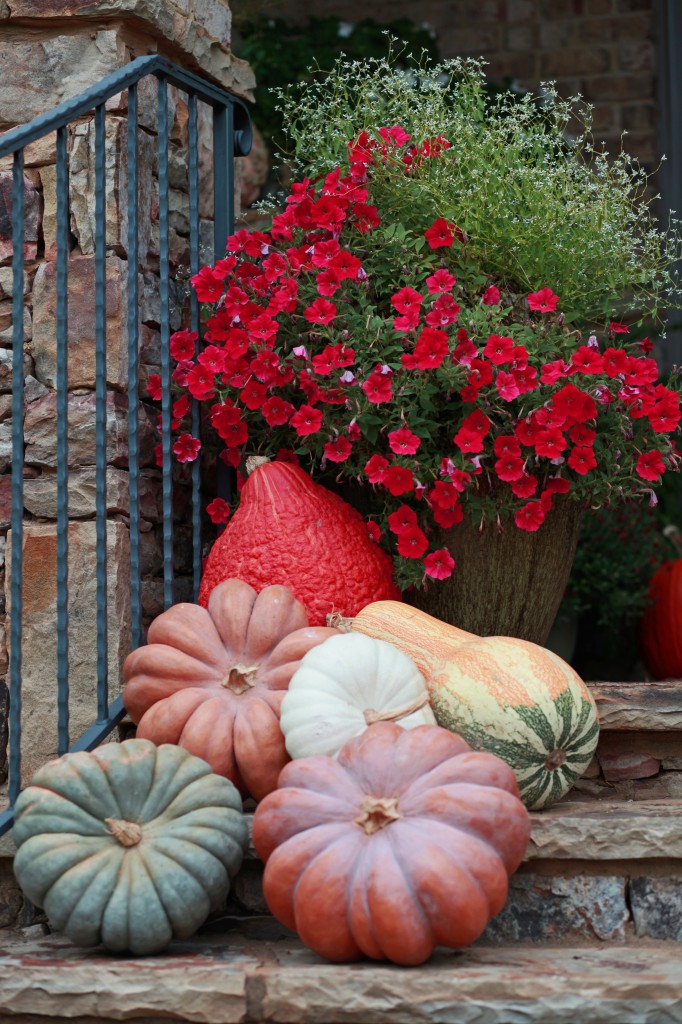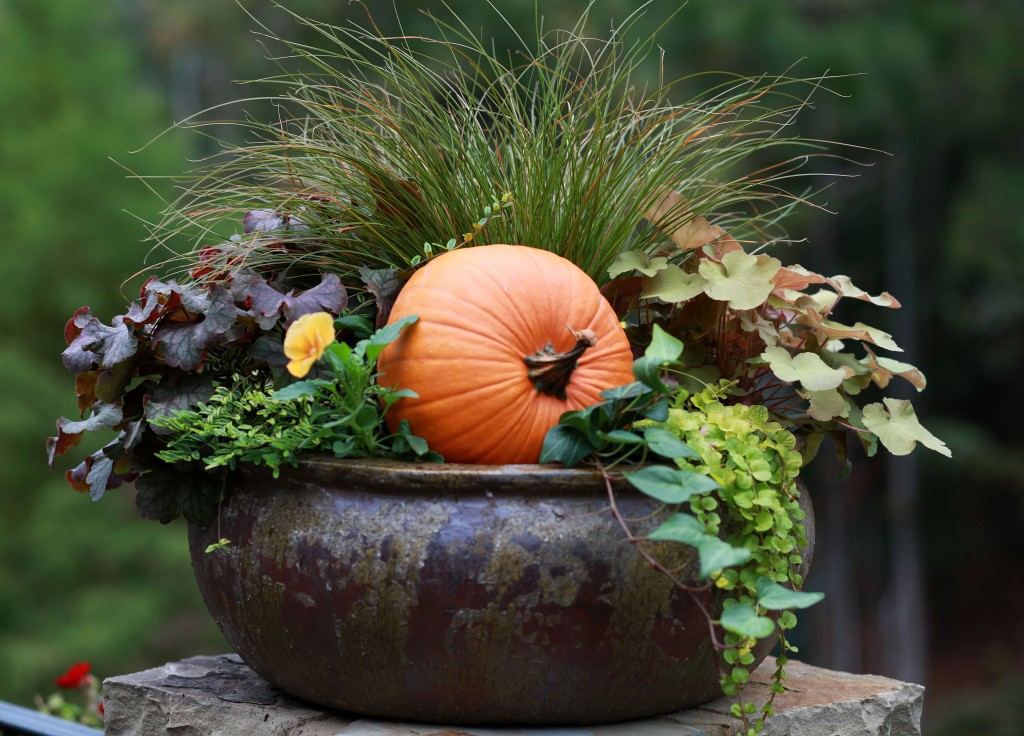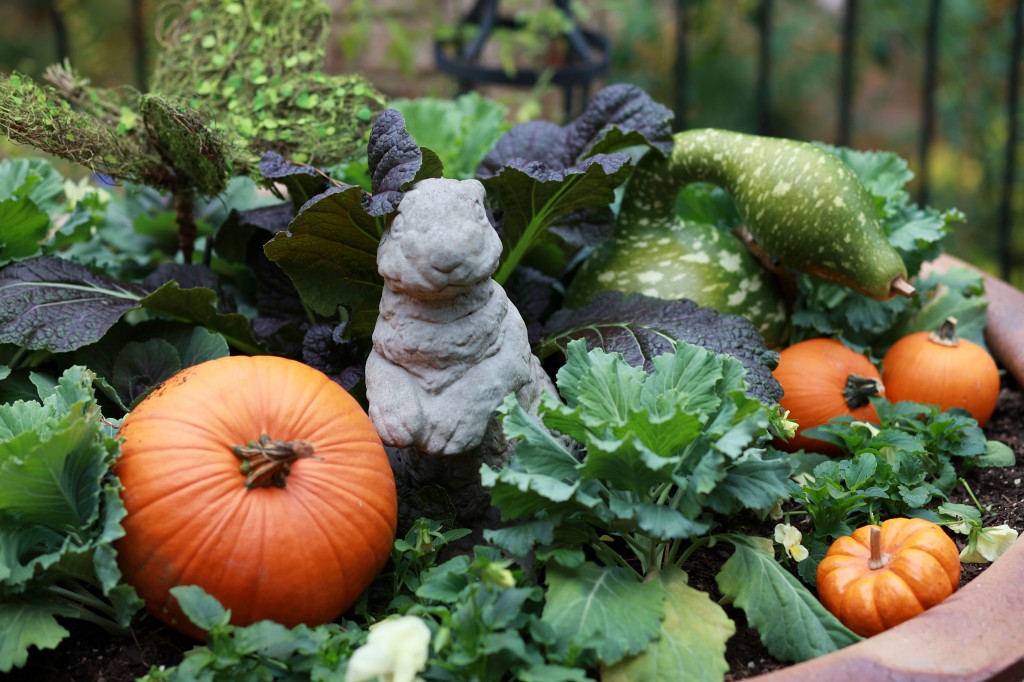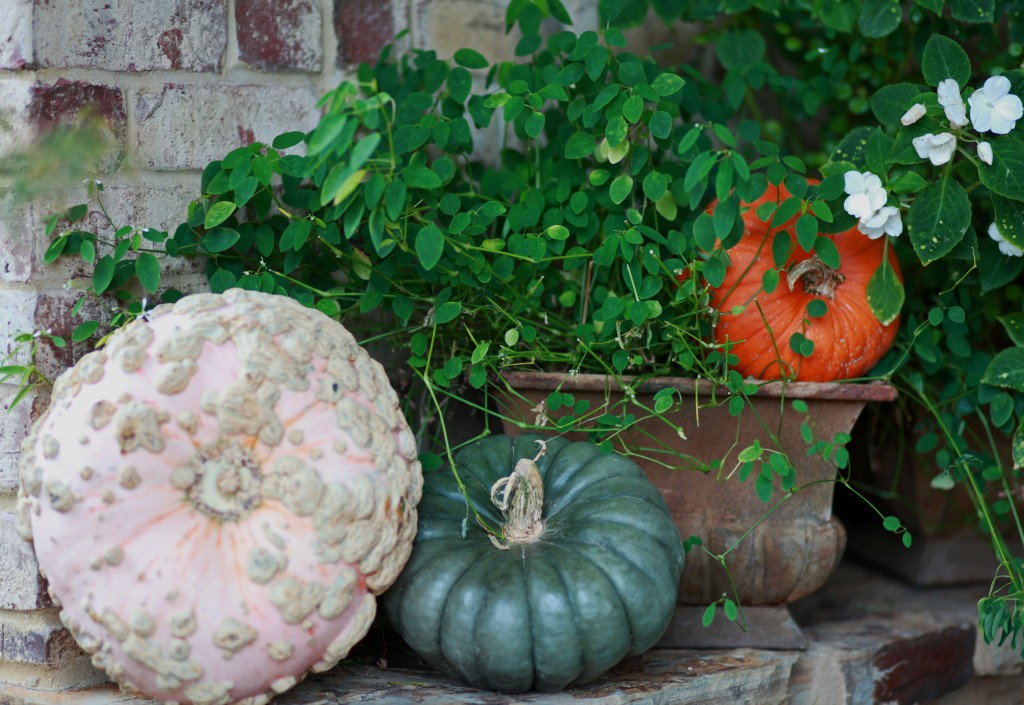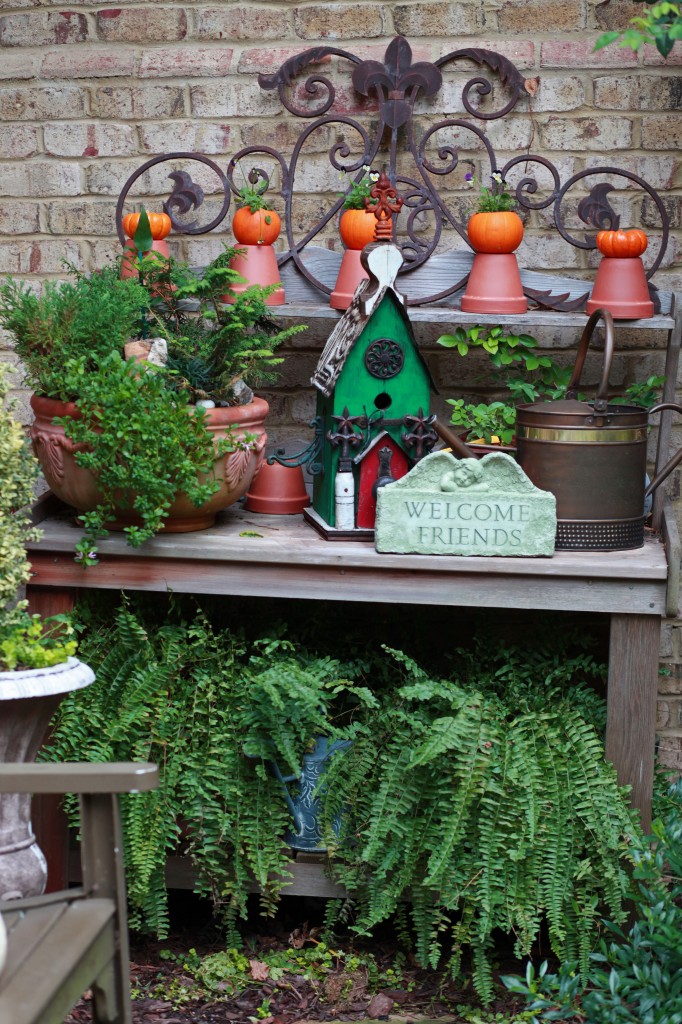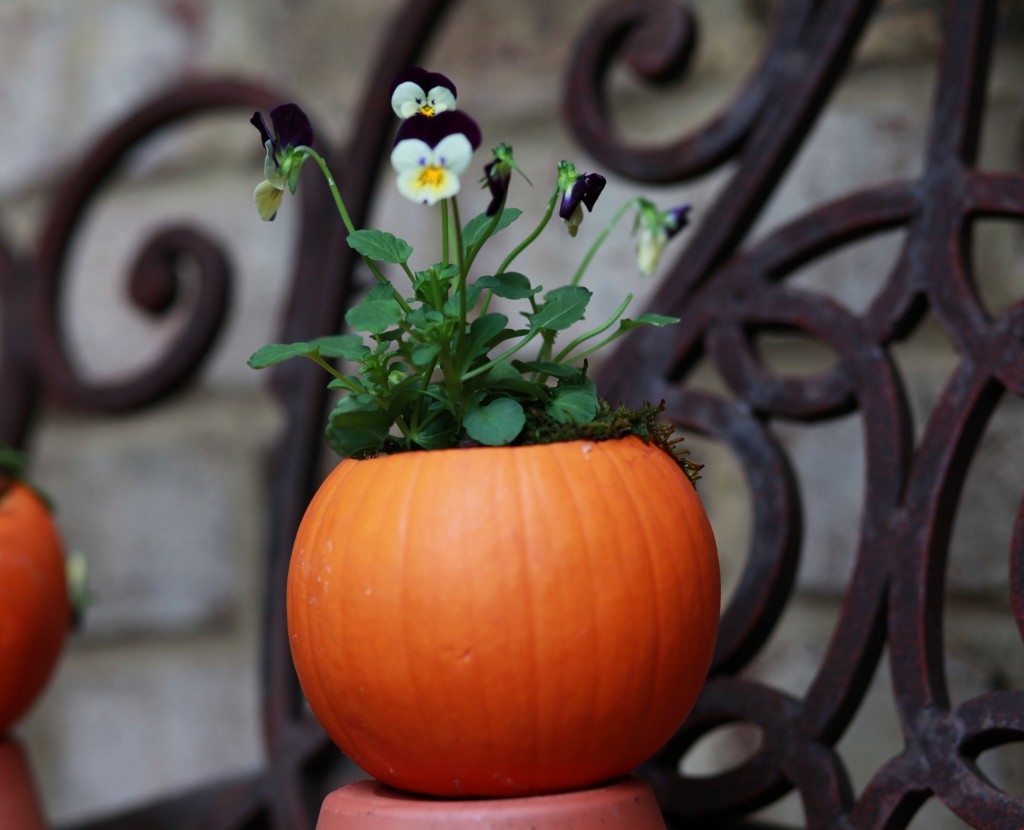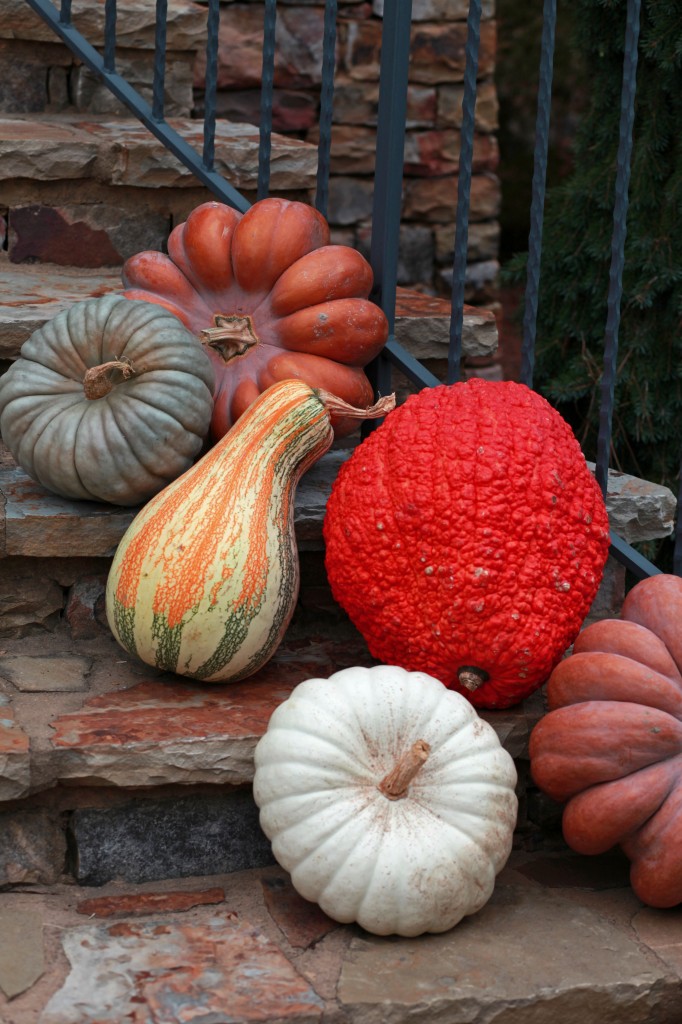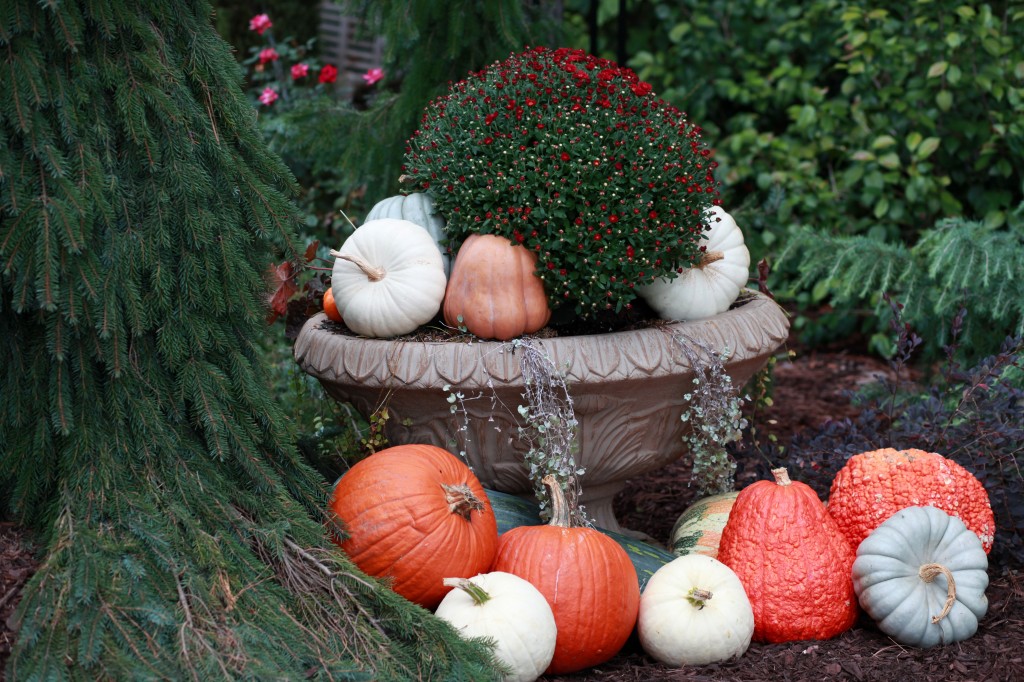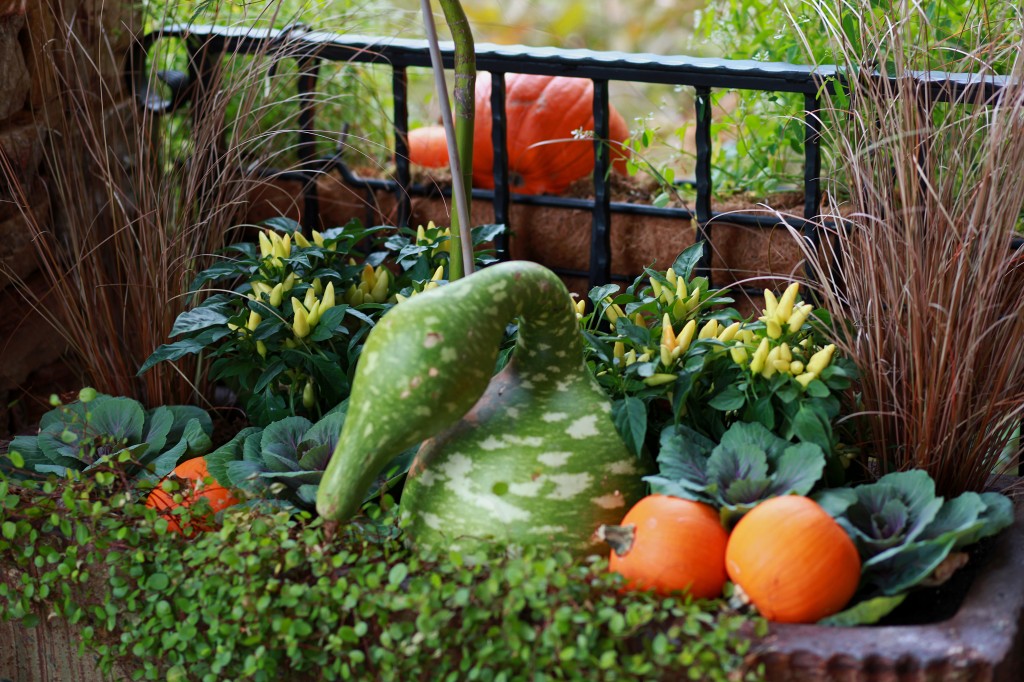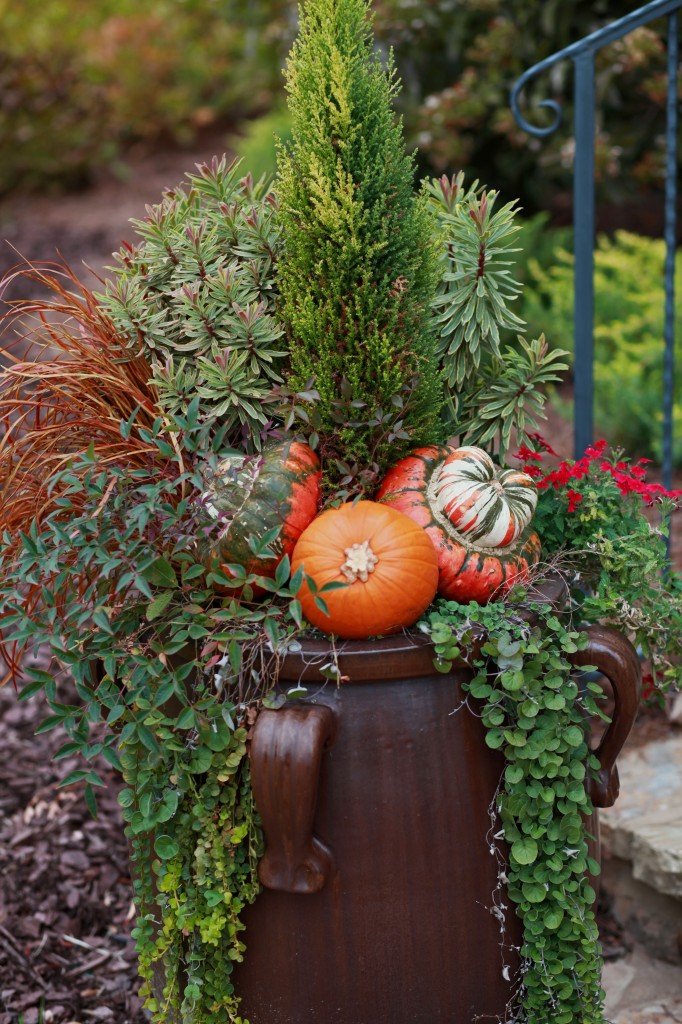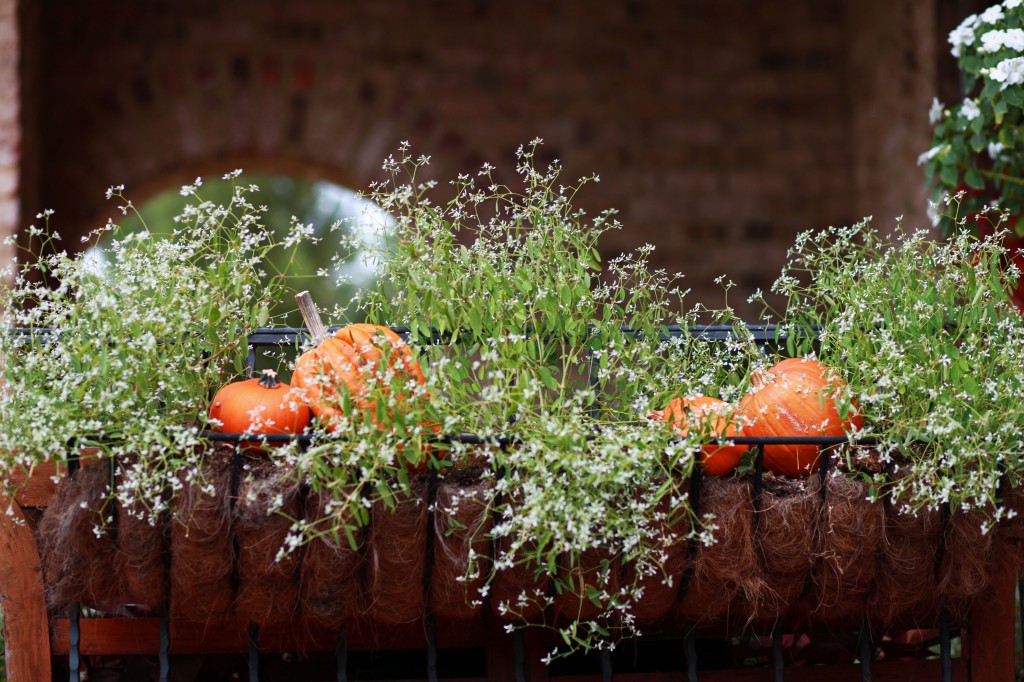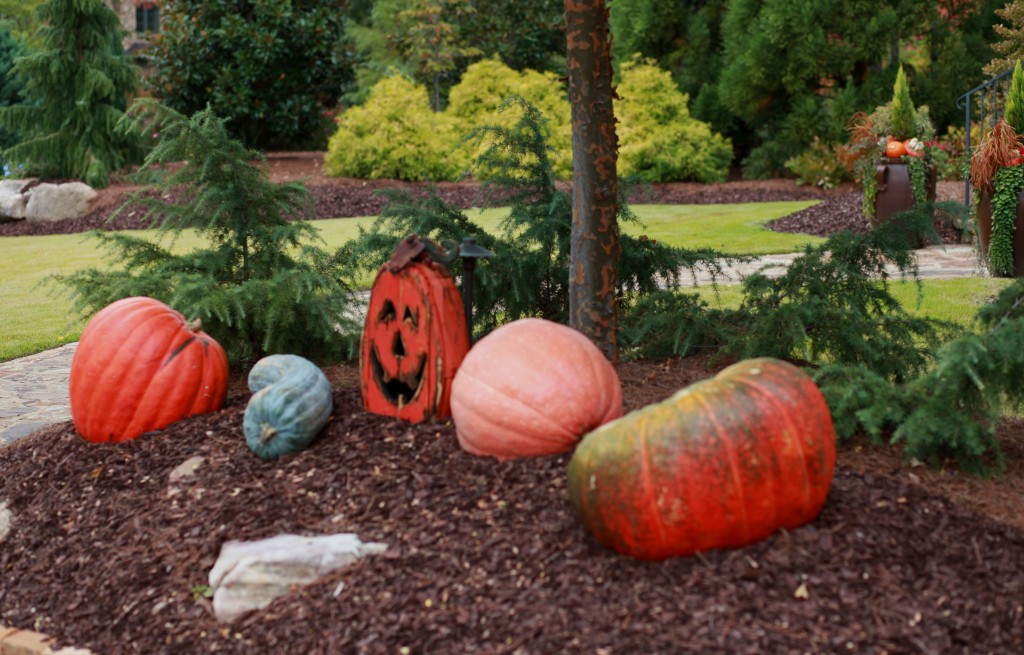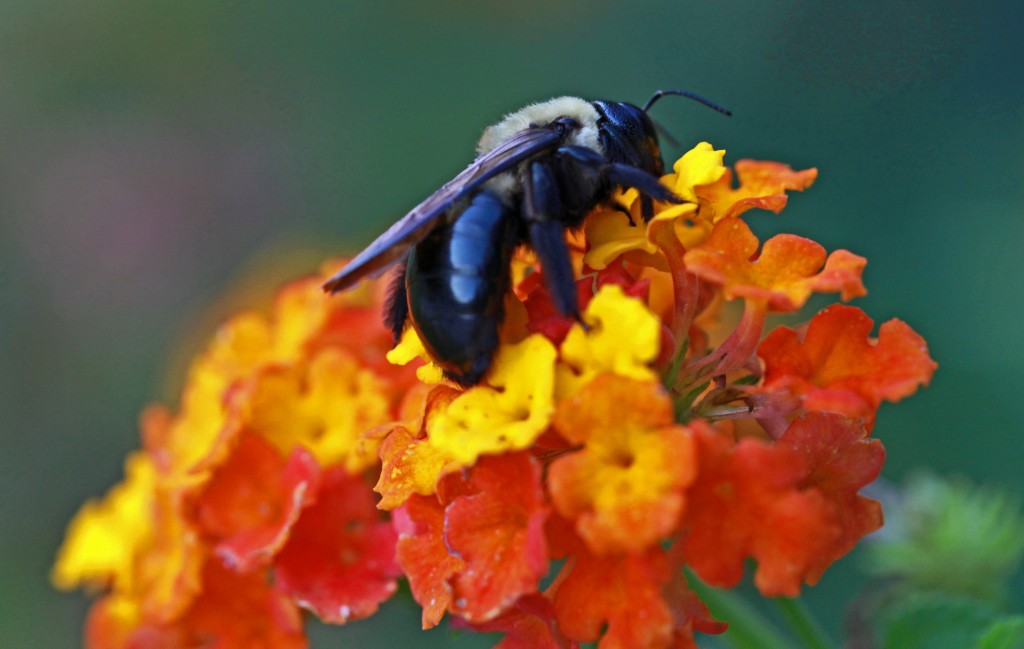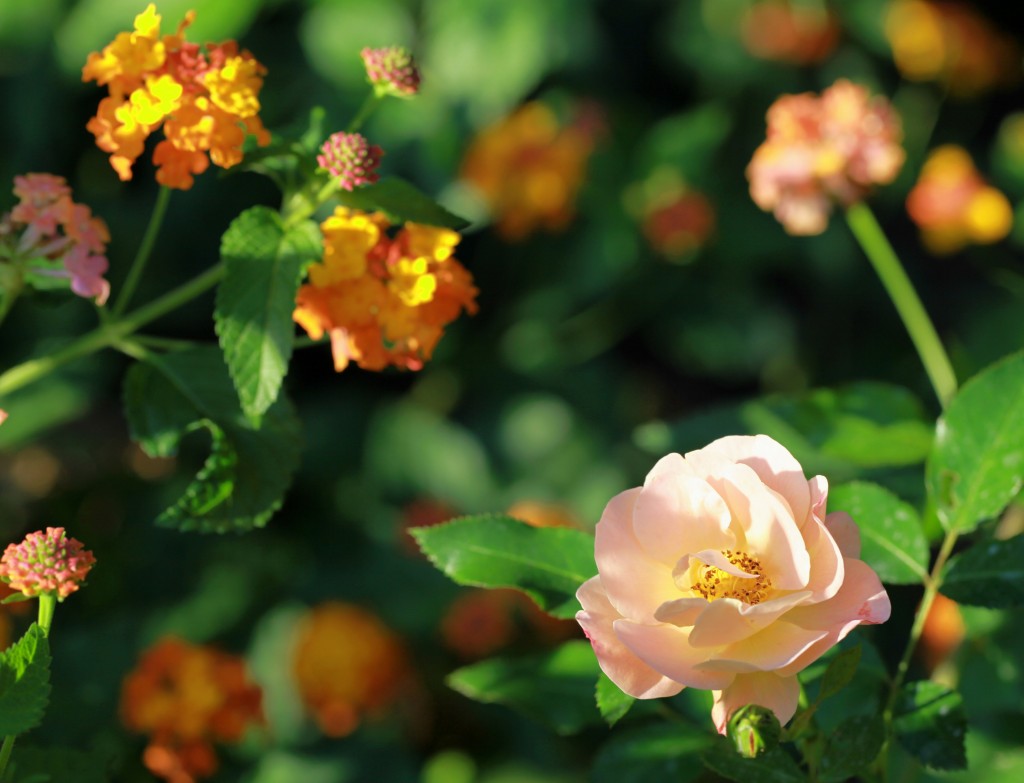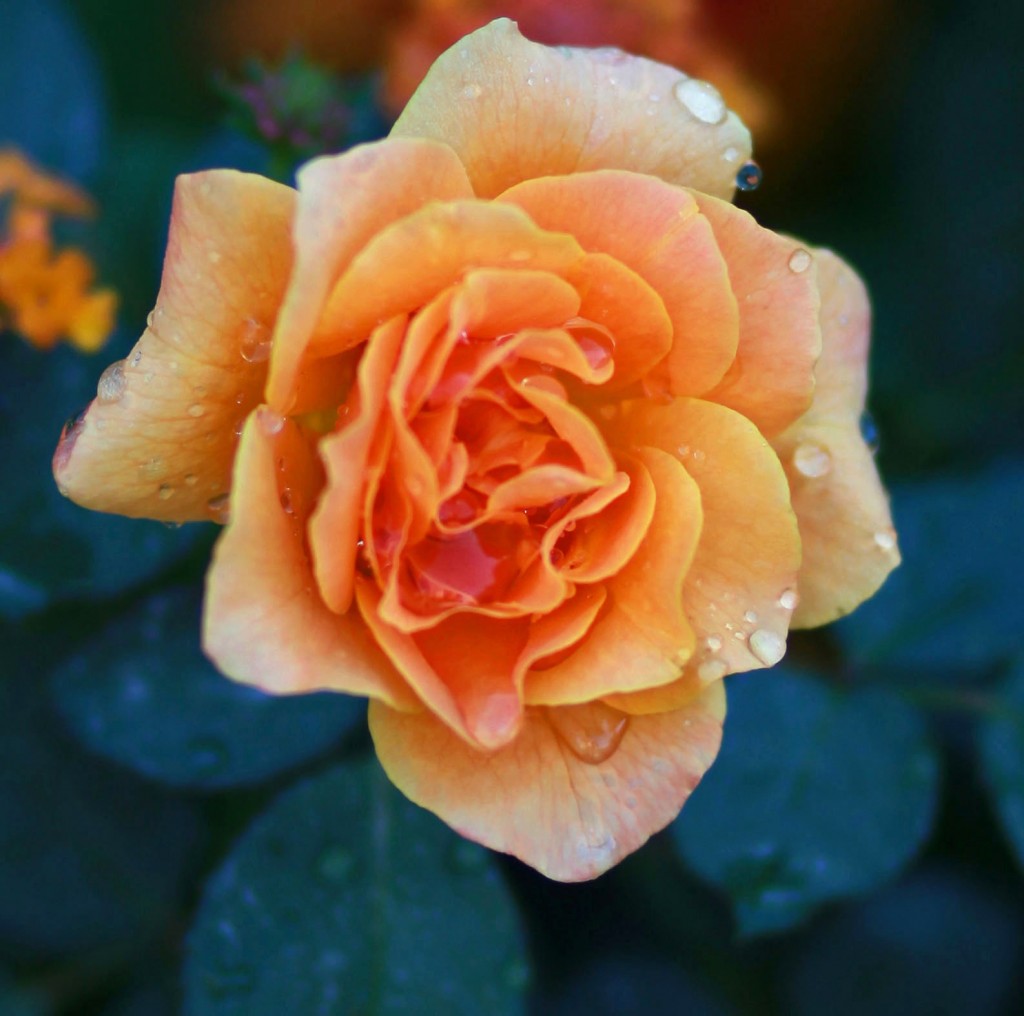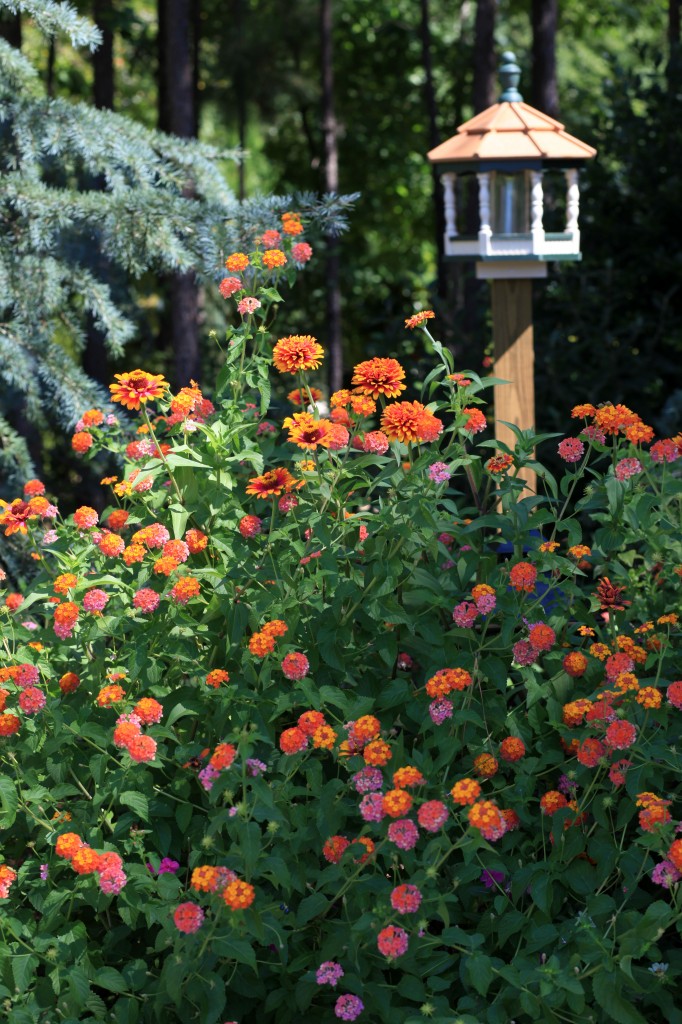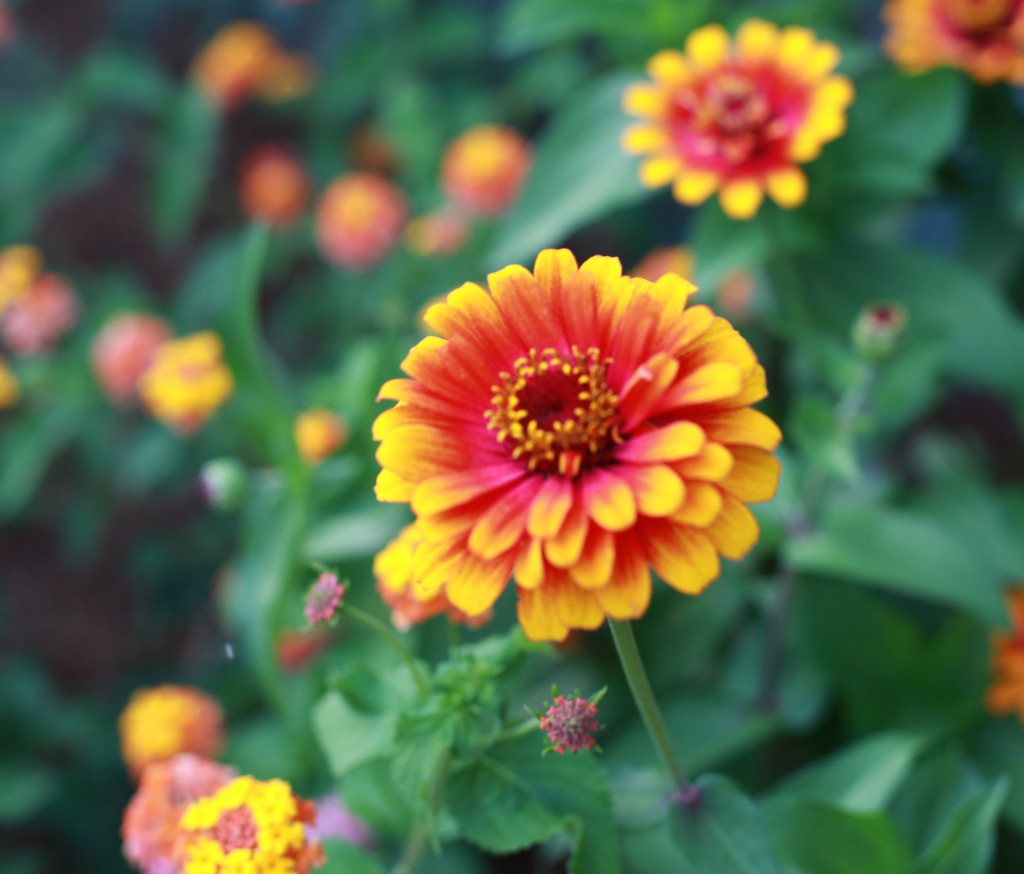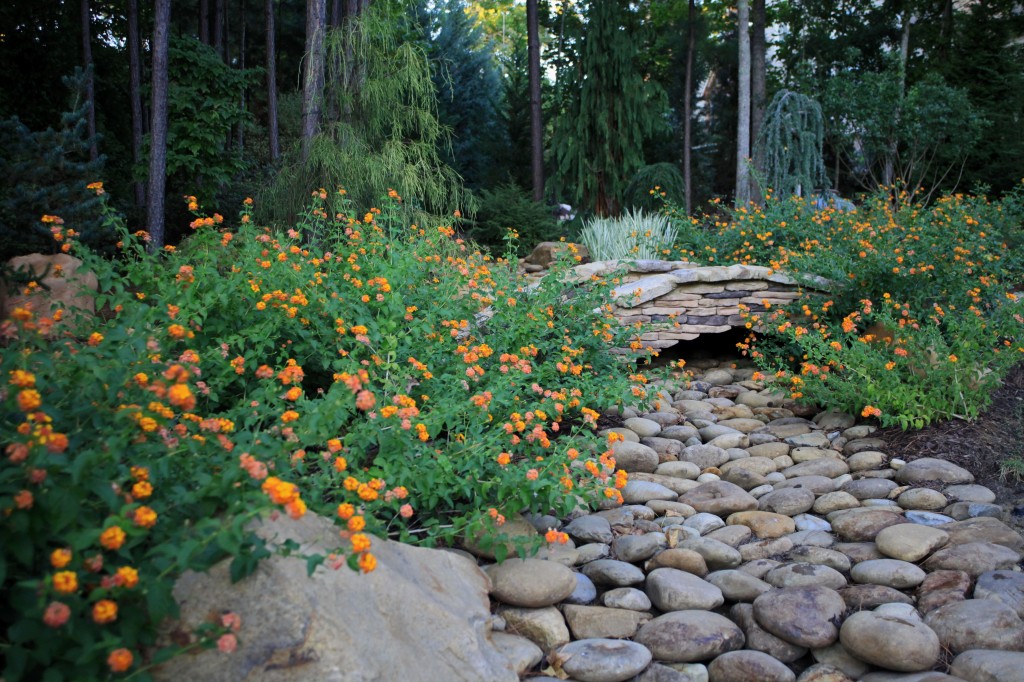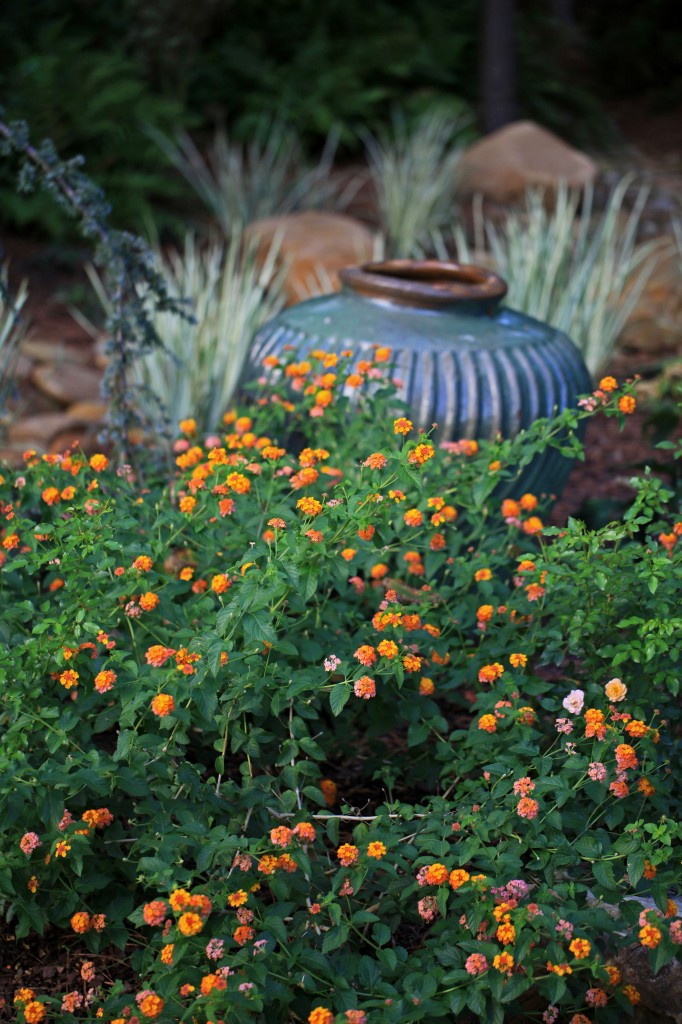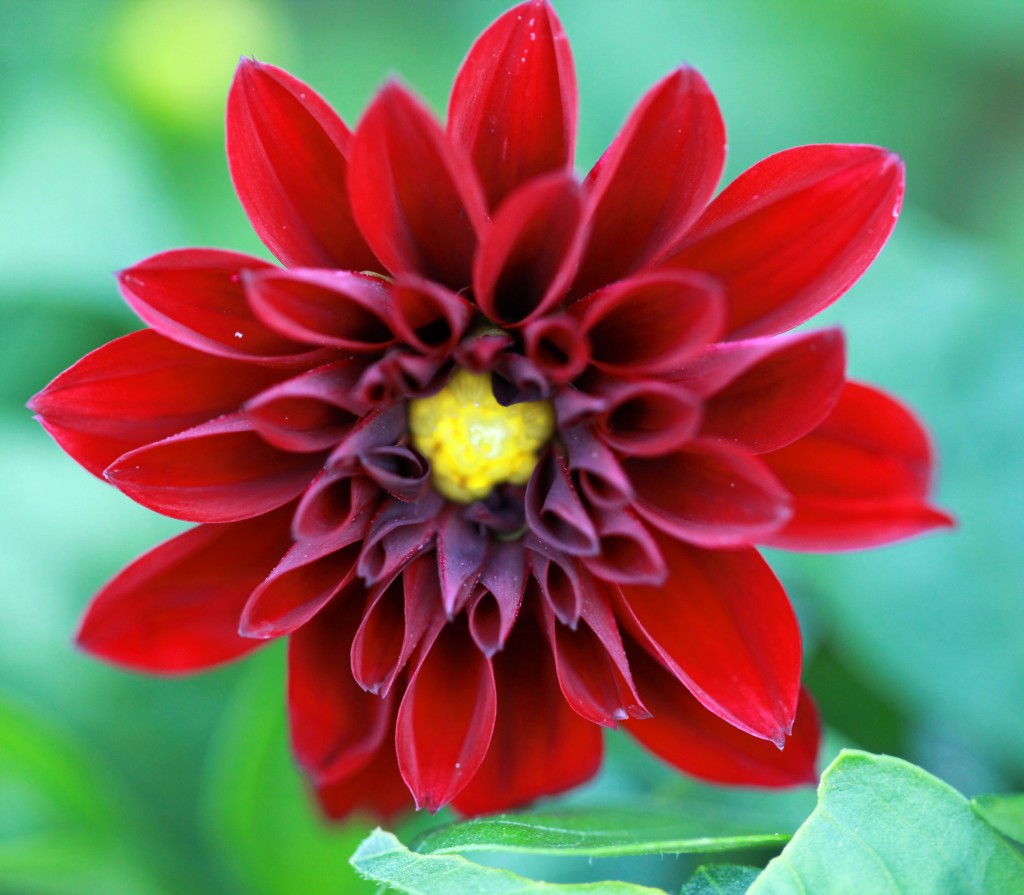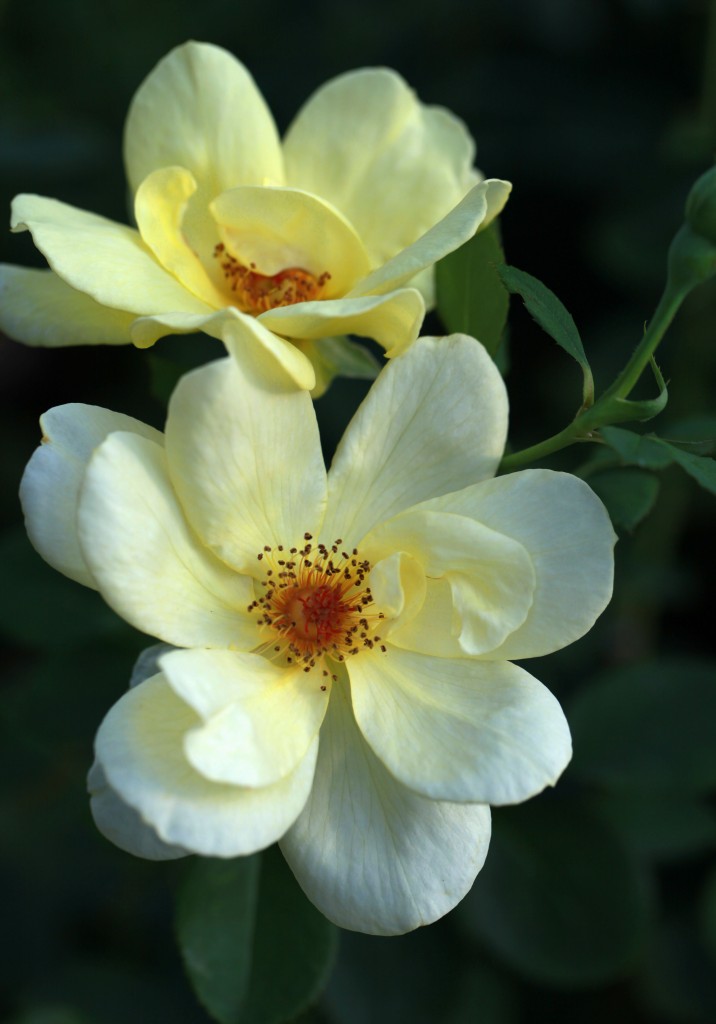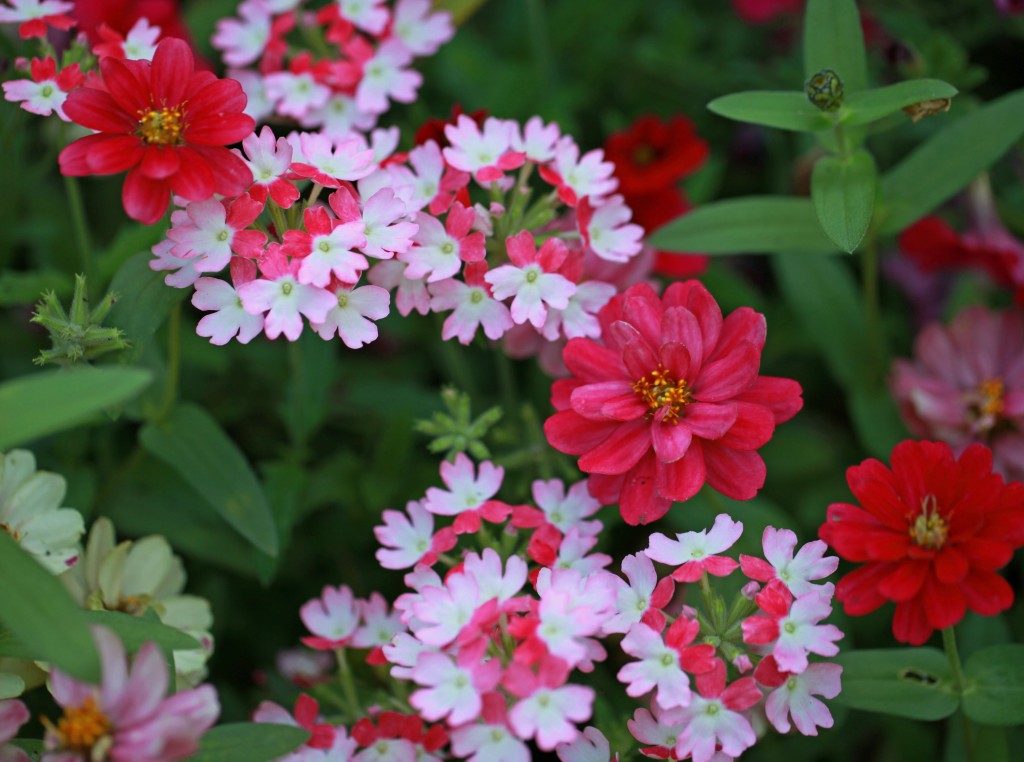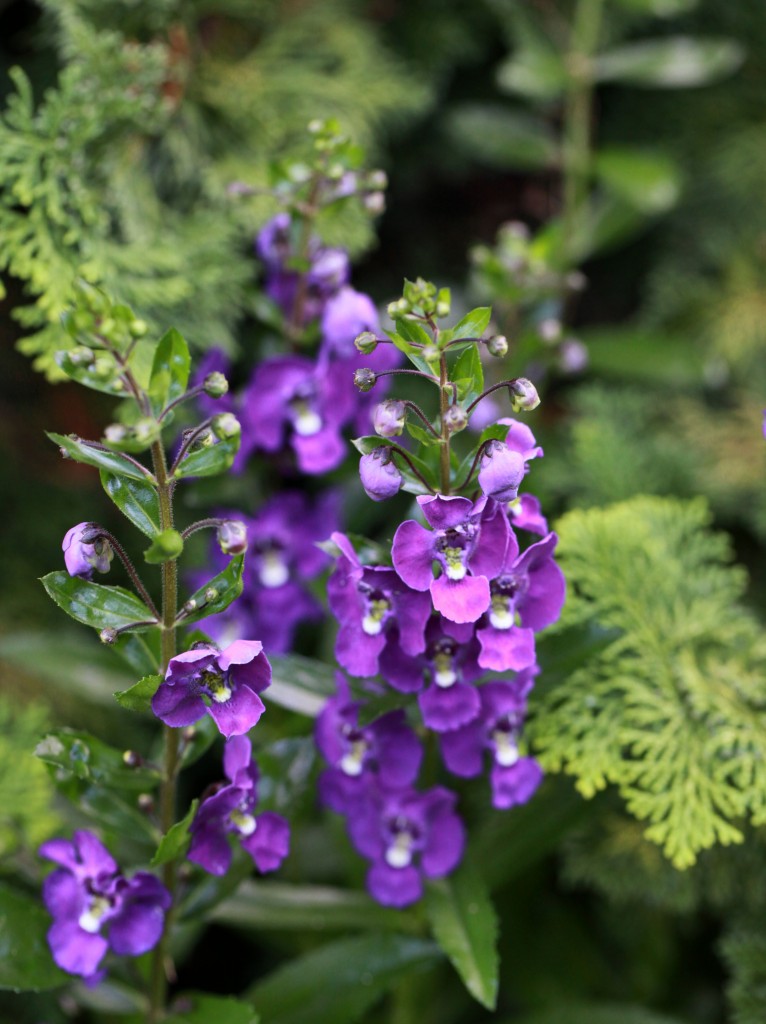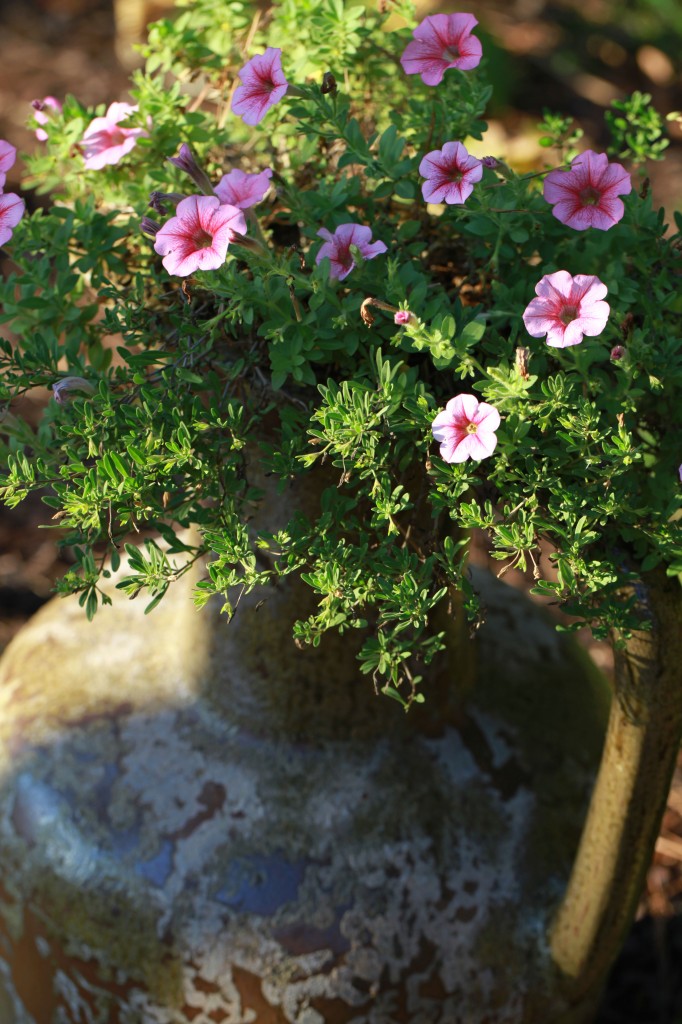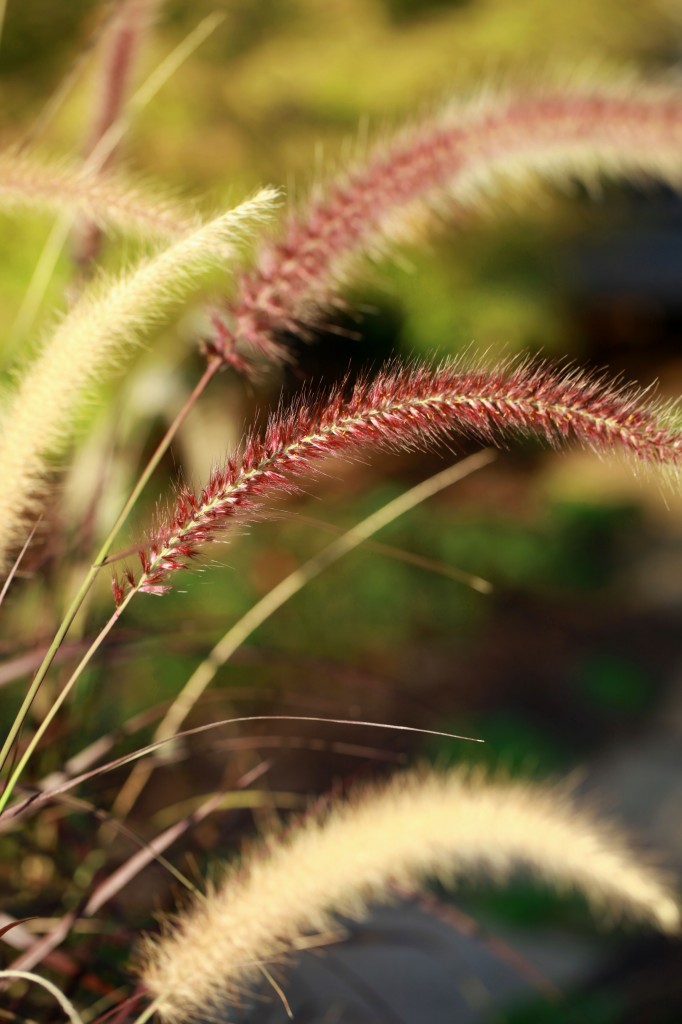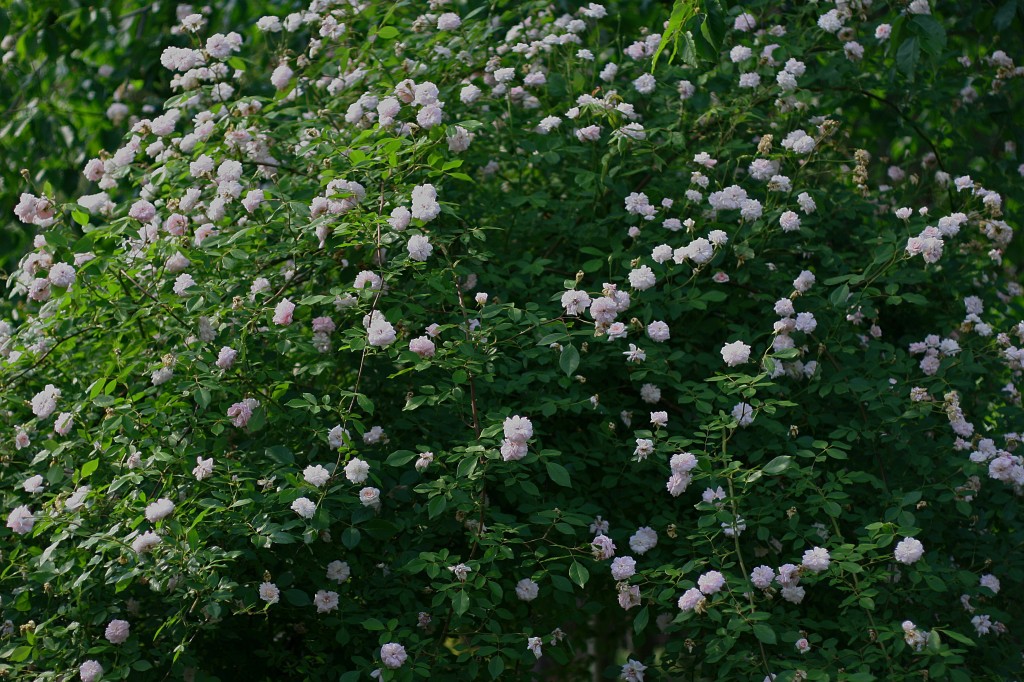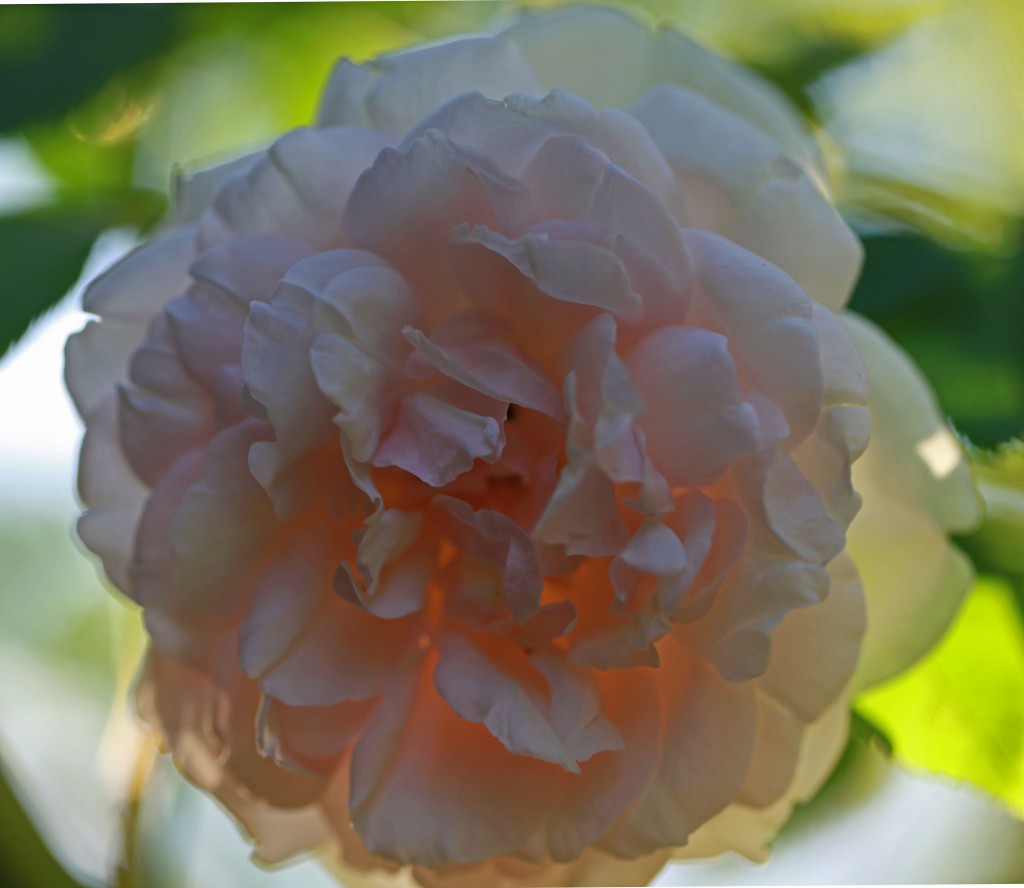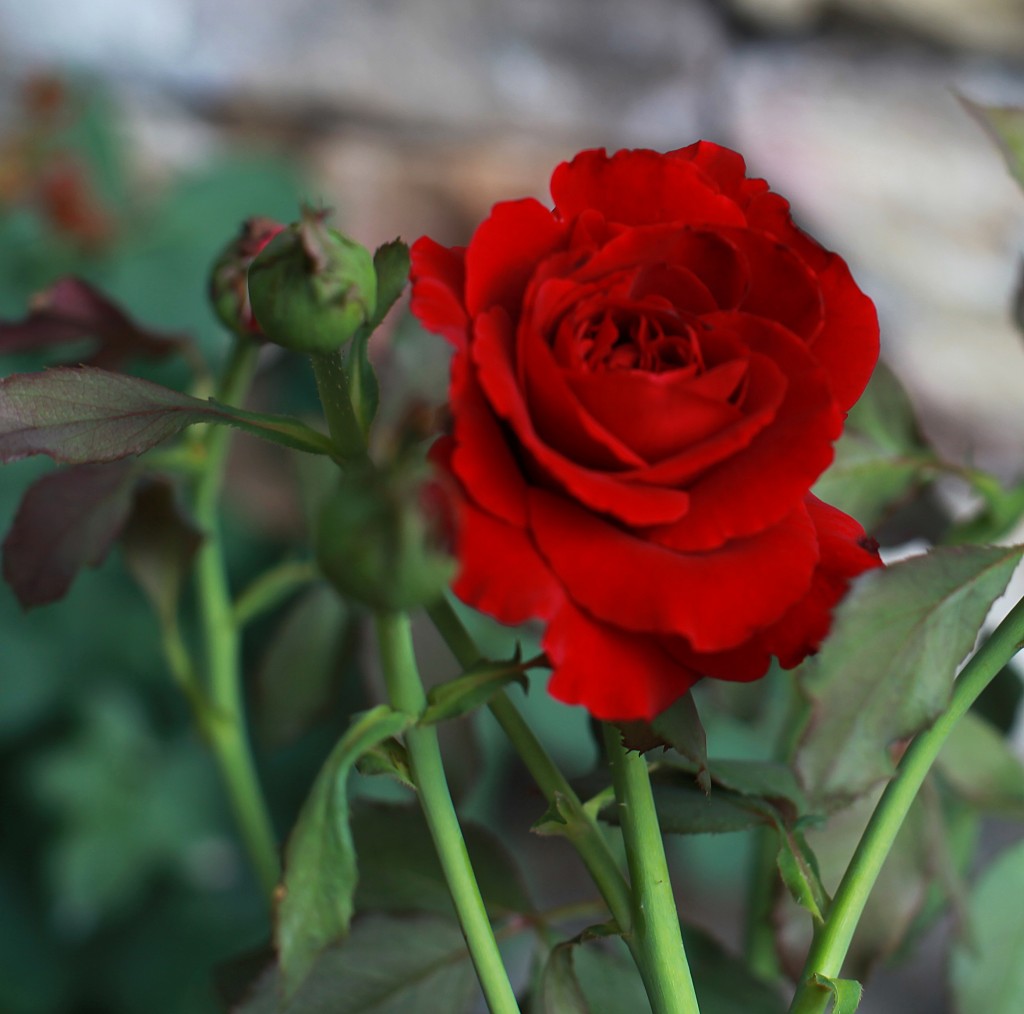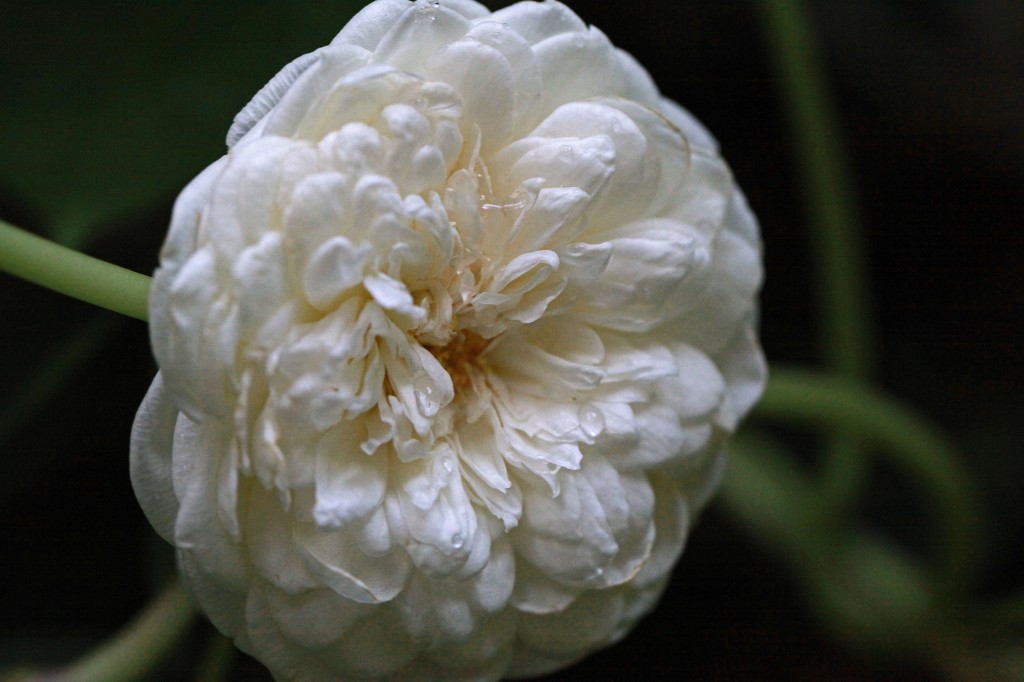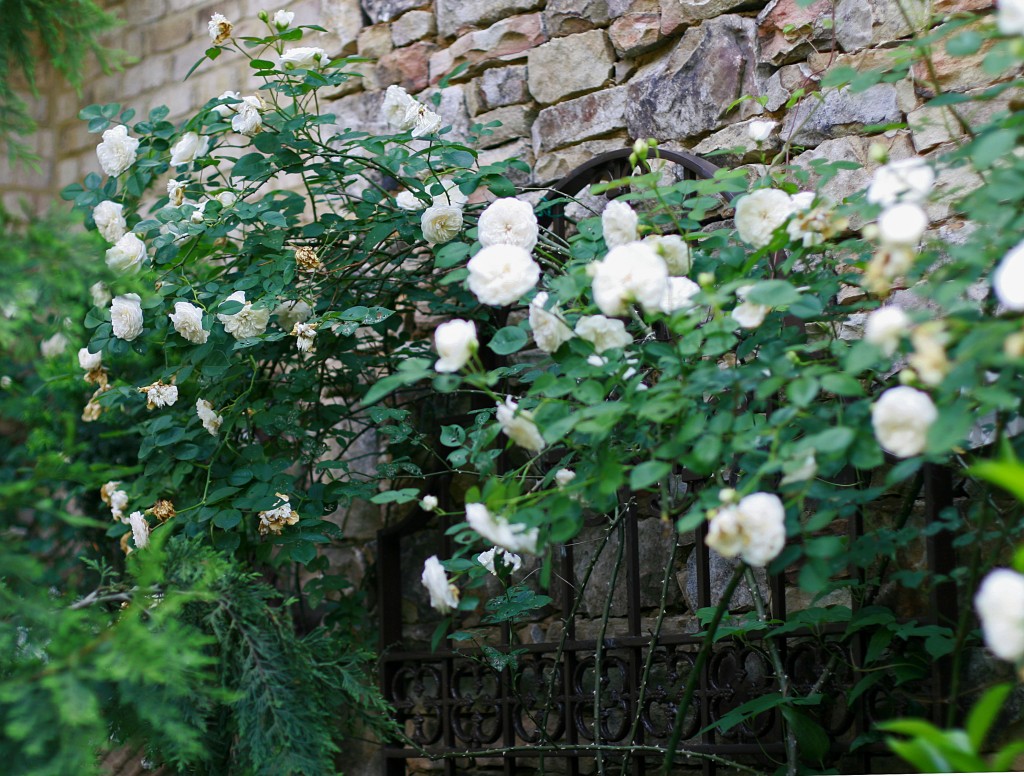For the Love of Birds…..my wild bird ‘Bed and Breakfast’ garden
I LOVE birds. I love feeding them, housing them in my landscape, and watching them as I tend the garden. I guess my garden has become a haven for my feathered friends since it offers them an assortment of food, water, and shelter . Over the years, I have collected quite a variety of bird feeders and birdhouses; many given to me as gifts. Here are a few photo’s of the ‘Bed and Breakfast‘ opportunities my garden has to offer my many feathered friends ……
This birdhouse has housed many birds over the years; the cypress vine embracing it attracts lots of hummingbirds in the summer.
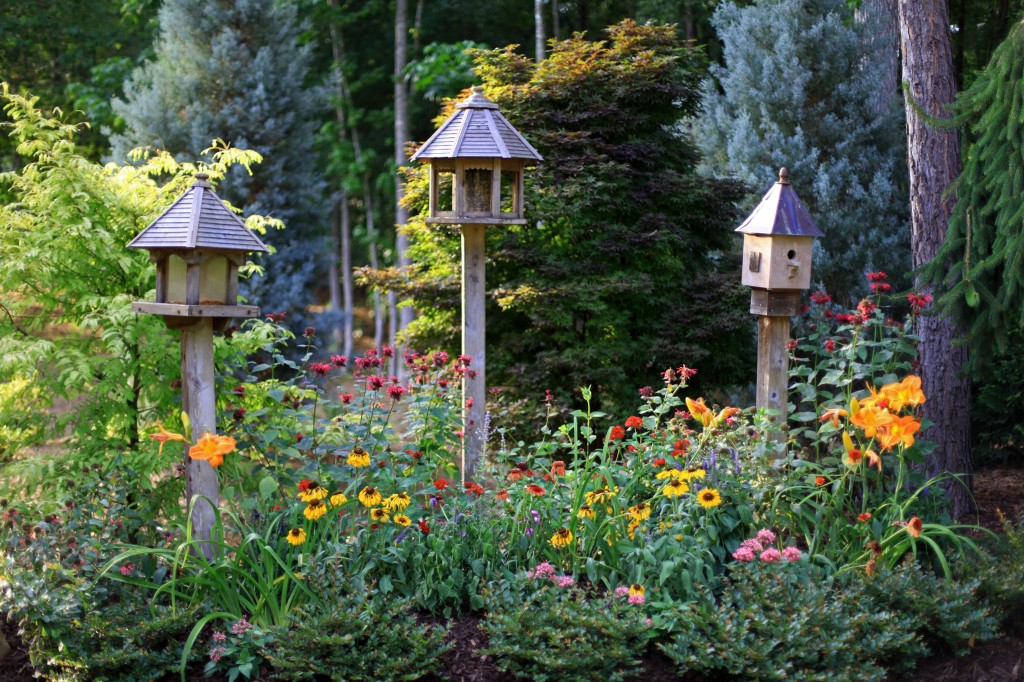 My trio of bird feeders/birdhouse attracts a variety of birds to my garden, such as: chickadees, golden finches, woodpeckers, cardinals, blue jays, and doves, just to name a few. The bird seed I normally use to feed my birds are: black oil sunflower, nyjer, safflower (due to all the squirrels) and suet. Finches are especially fond of nyjer seed . Woodpeckers, titmice and jays like to feed on suet.
My trio of bird feeders/birdhouse attracts a variety of birds to my garden, such as: chickadees, golden finches, woodpeckers, cardinals, blue jays, and doves, just to name a few. The bird seed I normally use to feed my birds are: black oil sunflower, nyjer, safflower (due to all the squirrels) and suet. Finches are especially fond of nyjer seed . Woodpeckers, titmice and jays like to feed on suet.
A Christmas gift from my niece last year..a birdhouse covered in bird seed!
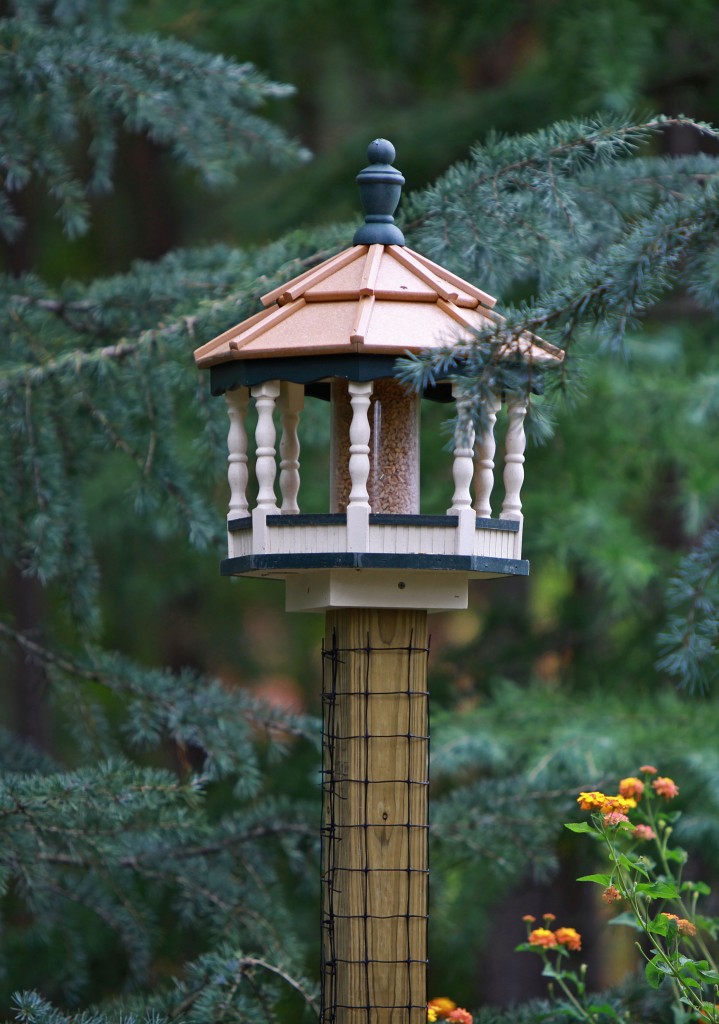 Bird feeders will help you attract wild birds to your property but make sure to provide a consistent supply of birdseed in a quality bird feeder.
Bird feeders will help you attract wild birds to your property but make sure to provide a consistent supply of birdseed in a quality bird feeder.
Also, be sure to clean your feeders to protect the birds and yourself. They should be cleaned periodically to remove old seed so that disease organisms do not kill the very birds you are trying to feed.
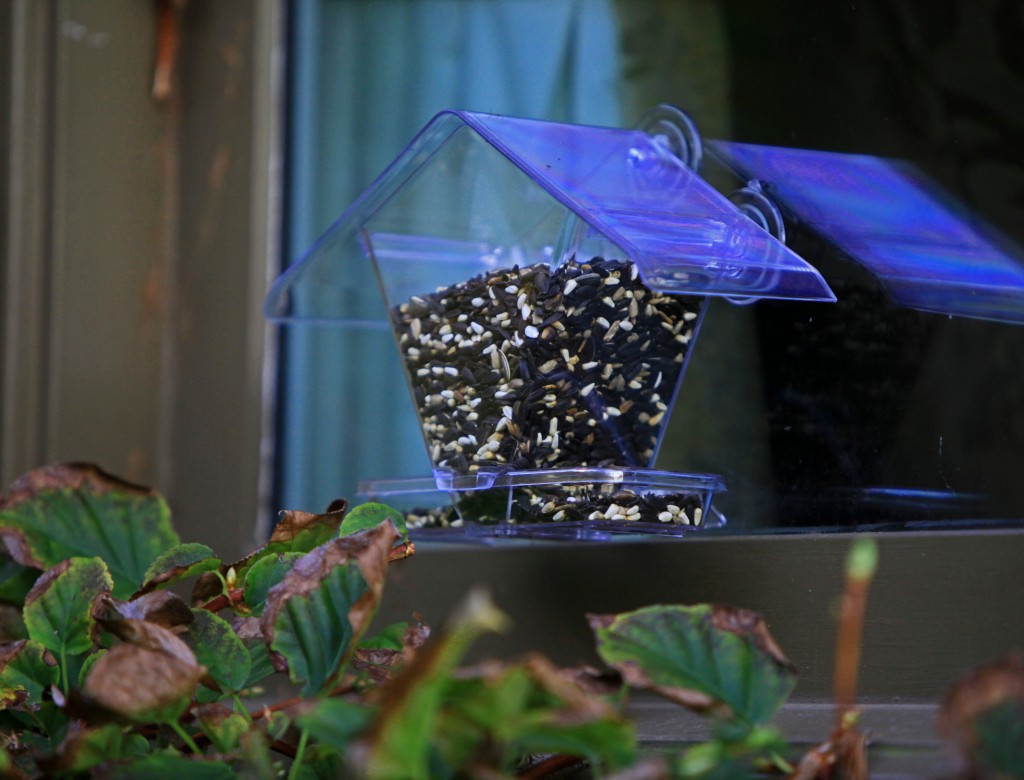 My window bird feeder (attached via suction cups) allows me to view my birds up close…maybe I’ll get lucky and get a close-up photo of my birds one day!
My window bird feeder (attached via suction cups) allows me to view my birds up close…maybe I’ll get lucky and get a close-up photo of my birds one day!
One of my more unusual feeding stations….a small bird feeder in my succulent basket container!
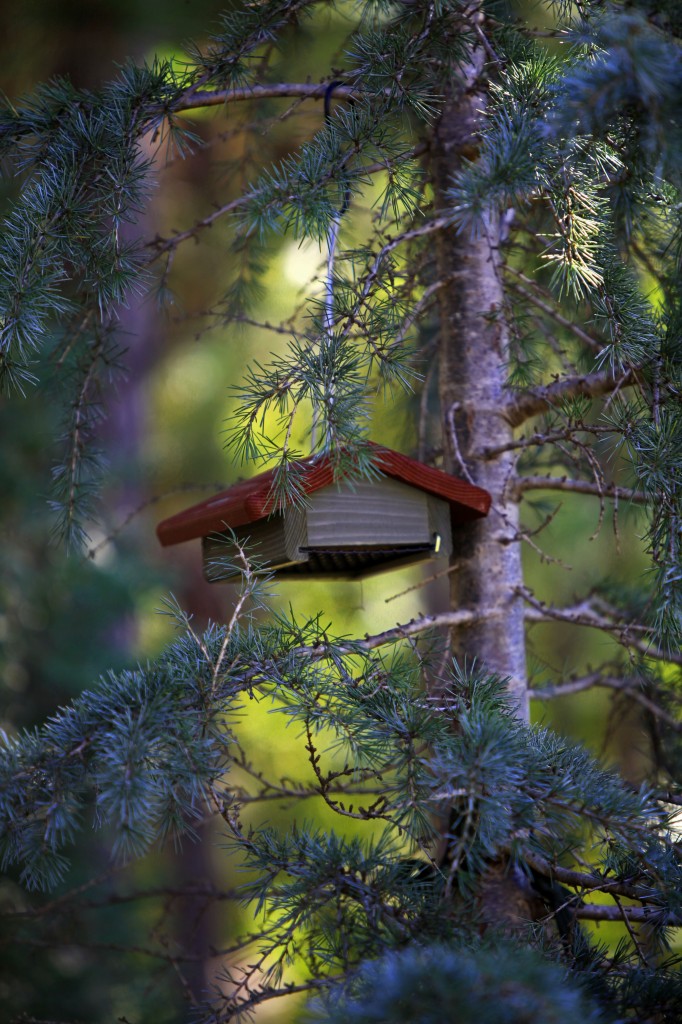 My Suet Feeder provides a protein filled snack for some of my smaller birds and woodpeckers.
My Suet Feeder provides a protein filled snack for some of my smaller birds and woodpeckers.
Another way of feeding birds is by offering and planting foods they would find in nature, and that starts with bird friendly plants such as berries from holly bushes and left- over flower seed heads. Also, a consistent supply of clean water for drinking and bathing via a birdbath, fountain ,etc. is needed to maintain a bird-friendly habitat.
Bird feeders and birdhouses add a liveliness to my garden; after all, our feathered friends need a regular place to dine and live…….so why not start your own wild bird “Bed and Breakfast” in your garden?
I did.
For tips on feeding your wild birds check out these links:
http://www.birdwatchersdigest.com/bwdsite/learn/feeding/foodchart.php
http://www.birdwatchersdigest.com/bwdsite/learn/feeding/dodont.php
http://www.birdwatchersdigest.com/bwdsite/learn/identification/index.php

